Even with heroic assistance of its European allies, the US was incapable of sustaining its long-planned proxy war in Ukraine. Preparation for war with superior military powers (never a good idea) like Russia and China would require doubling current borrowings for ten years, which even optimistic economists consider unsustainable. - Aurelien
Today, I have another PP story about my dog.
So I am carrying him rather than walk him. It was a crowded early evening. Perhaps a Friday night. And the walkway was full of people. Not so easy to walk a dog. So I am carrying him on my shoulders.
So he’s up there and we get behind this slow moving cabal of foreign women Karens.
They were just meandering.
Not walking from A to B, but just grazing, shuffling and just not moving out of the way, and Lordy!
I was getting frustrated.

But these women were just chatting up a storm and oblivious that they were creating a huge amount of congestion.
Finally, my dog, now at face level turned and face to face to the slowest Karen in the group, barred his teeth and snapped and yappped yapped, yapped, followed by a barking growl, and the poor woman nearly had a heart attack.
One minute she is in some kind of la la land, the next she is facing the Alien creature barring it’s nasty teeth.
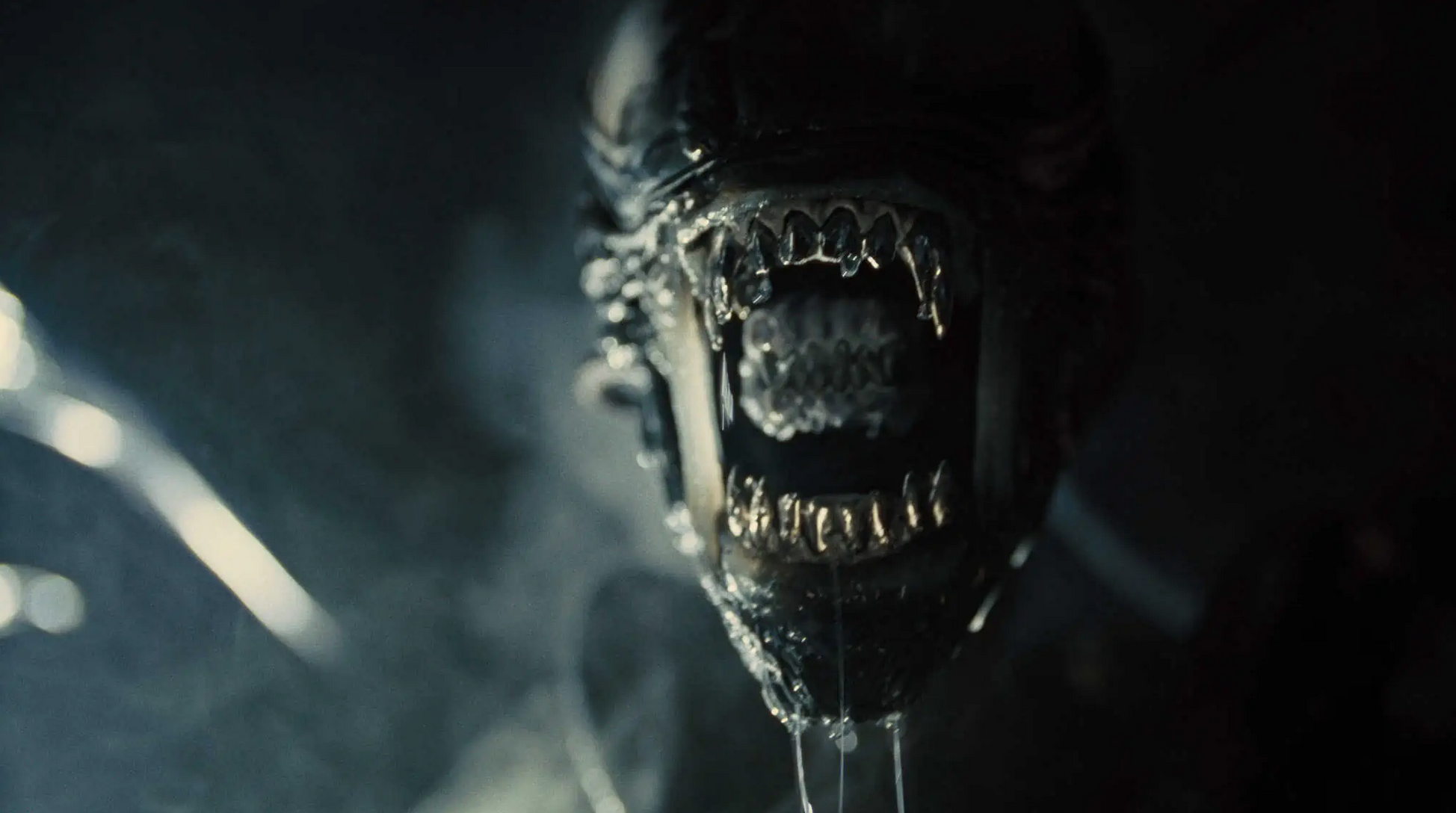
I still get a chuckle when I remember that incident.
LOL.
Today…
If the US continues to provoke China through Taiwan, how likely is a Chinese base in places like Cuba, Venezuela, and Nicaragua?
There is no need for us to do this.
As we all know, the PLA’s military maps record the locations and coordinates of the United States’ fixed military bases around China, and China’s missiles have long locked onto these fixed military bases, so in wartime, all it takes is a press of a button.

Not only are fixed military bases liable to bear the stigma of military expansion, but they can also easily become targets of attacks by the US military, thereby dragging these innocent countries into superpower wars and subjecting their people to the ravages of war.
We cherish the friendship between Cuba, Venezuela, and Nicaragua and China, but we do not want them to be harmed by China’s internal affairs.

China should be a responsible major country, not a major country that brings trouble to its friends.
We Chinese cannot be as selfish as Americans, who only consider our own interests and not the interests of our friends. Since we have been friends and brothers with them for many years, we should take the initiative to consider each other.
Did you know there is a weapon called a nuclear submarine?
Nuclear submarines are mobile military bases.
The nuclear warheads carried by a nuclear submarine can destroy hundreds of cities. China only needs to send a nuclear submarine to surface in the high seas around the United States and let the Yanks see it.
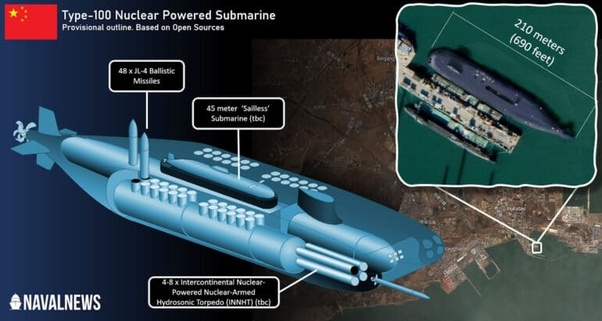
The Yanks are essentially profit-seeking businessmen, not lunatics. They know how to seek profit and avoid harm.
We are not trying to show off our muscles, but the PLA submarine soldiers also need to bask in the sun, which is human nature. right?
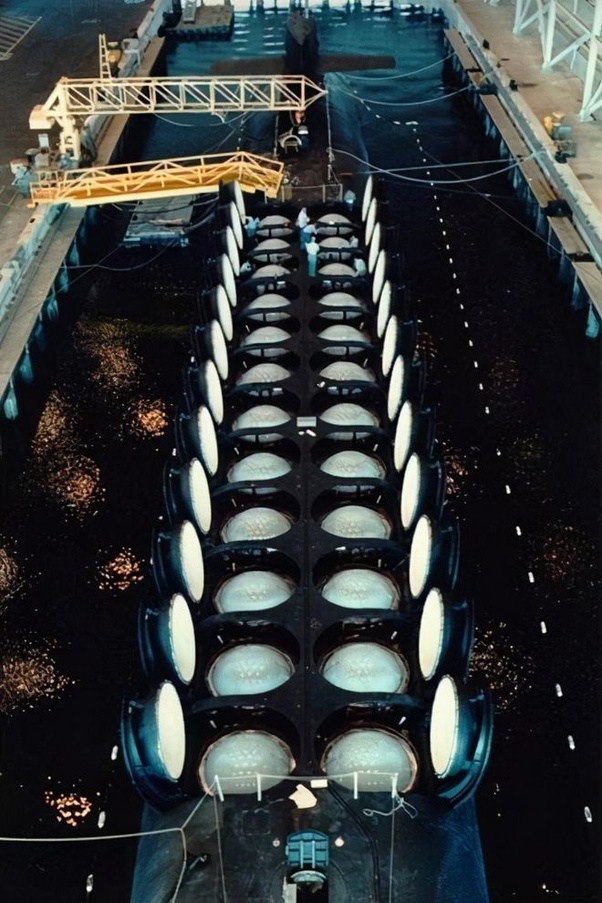
Whoa…
Everyone, the Type-100 Chinese submarine is a fictional creation, originating from an April Fool’s joke by H I Sutton for Naval News. The imaginary submarine was described as an enormous vessel with advanced capabilities, including 48 missile silos and ‘hydrosonic’ nuclear torpedoes, but this was entirely fabricated as part of the prank (Naval News) .
Cat distribution system
10 Thoughts All Girls Have During Sex
We all have things that go through our heads when we’re having sex and they aren’t always super sexy thoughts either. We ladies can have entire conversations with ourselves while our partner is inside of us. Heck, we talk all the time so having a silent conversation in our head during sex isn’t as strange as it sounds. So, here are 10 thoughts all women have during sex and why.
1. Maybe I should moan louder so he will step this up a bit?
Sometimes an orgasm isn’t going to happen. It’s not anyone’s fault, it just is. Once a woman realizes she’s not having one, she’d like to wrap up the sex and go do something productive instead. We don’t want our partner to feel bad, especially if he did his best to make it happen so we fake it occasionally. He feels good and we can go to sleep, watch t.v. or whatever.
2. Did I pay that bill?
Yeah, sometimes random crap pops in there. We don’t do it deliberately. It also throws off our mojo a bit because we’re going to want to check. We may fake it here too or just start yelling out crazy stuff like “oooh baby, yeah harder, harder or faster, faster” because that is most likely going to bring us to orgasm unless he comes too quickly. Either way, we can double check that bill.
3. Did he just come? Really?
Things are moving oh so nice and the build-up is happening. She is well on her way to a mind-blowing orgasm and then he makes that sound, stiffens up and then plops. Then we hear Bob Uecker’s voice “just a bit outside”. Damn, damn, damn…
4. I wonder if I can sneak this fart out without him noticing.
Okay, I know this sounds terrible but we’re human and we fart too. Sometimes the urge strikes us and hopefully it strikes when it’s when there is a penis in the vicinity rather than a tongue, if you catch my meaning here. The urge happens during sex sometimes and is made worse when the position is missionary rather than doggie or cowgirl. Having all that extra weigh on top makes it harder to hold in, which almost every woman on the planet would rather do but it’s not always possible.
5. Does he really think that squeezing my boob a few times is foreplay?
Seriously guys a peck on the lips and a couple squeezes on the tit does not foreplay make, okay? We need the foreplay to get our working parts ready for action and without it…ouch. Little or no foreplay is likely going to create a situation like #1 except this time we’ll blame you – in our heads if not outright. Yeah, we’ll fake it but you’ll pay for it later, we are petty like that.
6. I think I may have to help myself out a bit.
Maybe the foreplay was shallow or things just aren’t going as we hoped but we’re still in the game and wanting the prize. When that happens, we’ll snake a hand down to our clitoris or pull out old faithful (our vibrator) and get things moving a bit. Don’t panic, we adore you, really, we do that’s why we didn’t fake it and go eat ice cream. Go with it.
7. I’m hungry.
We’re human and we get hungry. Deal with it. I mean you don’t want our thighs to cramp up while in a reverse cowgirl, do you?
8. I think the dog/cat is watching.
Dogs and cats are so weird, they will totally watch you bang. Some people don’t care but most of us find performing for an audience awkward. I always worry that they will try and stick their nose someplace it does not belong. Literally.
9. Why do my boobs always go into my armpits?
Women are generally always worried about how their bodies look and that’s when we have our clothes on. Once we’re naked we notice everything like the boob thing. Smaller breasted women will complain that they look flat or become a large set of nipples and not much else when on their back. Larger ladies have boobs that go sideways right into the pits, bend us back far enough and then we get strangled. Boobs…they look nice but they cause a lot of trouble during sexy time.
10. Seriously, how do you not know where the clit is?
We really need you to get fully acquainted with the clitoris. It’s not GPS accessible so you’re going to have to locate it on your own or you could ask. If you’re rubbing till your hand cramps or licking till your jaw aches and moaning isn’t happening widen your search area. If you hit a hole, go up slowly about an inch or so. If it is more than an inch away from the vagina, orgasm through vaginal penetration alone won’t happen so that clit is going to be your salvation. The clitoris accounts for nearly 70% of all orgasms in women so you really need to locate it and give it a good workout.
Modern Women Can No Longer Find Decent Guys … It’s Over!
50 Dad Jokes You’re Going to Hate Yourself for Laughing At
1. My wife accused me of hating her family and relatives. I replied, “No, I don’t hate your relatives. In fact, I like your mother-in-law a lot better than I like mine.”
2. My girlfriend is turning 32 soon, and I told her not to get her hopes up. “After all,” I say, “we’re only going to be celebrating it for half a minute.” When she asked what in the world I was talking about, I pointed out, “This is your thirty-second birthday.”
3. My friend keeps saying “cheer up man it could be worse, you could be stuck underground in a hole full of water.” I know he means well.
4. How do locomotives know where they’re going? Lots of training.
5. What’s the difference between roast beef and pea soup? Anyone can roast beef.
6. The secret service isn’t allowed to yell “Get down!” anymore when the president is about to be attacked, now they have to yell “Donald, duck!”
7. What is the least spoken language in the world? Sign language.
8. My friend has been a limo driver for 25 years and hasn’t had a single customer…All that time and nothing to chauffeur it.
9. A man walks into a zoo. The only animal in the entire zoo is a dog. It’s a shiatzu.
10. Why did the lifeguard not rescue the hippy? He was too far out man!
11. What do you call it when a chameleon can’t change colors anymore? A reptile dysfunction.
12. I used to be a member of the secret cooking society…But they kicked me out for spilling the beans.
13. We can’t take our dog to the pond anymore because the ducks keep attacking him… I guess that’s what we get for buying a pure bread dog…
14. I used to hate facial hair, but then it grew on me.
15. Where do fishes keep their money? In the river banks.
16. If money doesn’t grow on trees, then why do banks have branches?
17. Orion’s Belt is a waist of space.
18. My recliner and I go way back.
19. You know what they say about grandfather clocks…they’re old timers!
20. What is Romeo and Juliet’s least favorite fruit? Cantaloupe
21. Why do fish live in salt water? Because if they lived in pepper water, they would sneeze.
22. I said to my wife, “I need to call the doctor today.”
“Which doctor?” she replied.
“No, the regular kind.”
23. How do you know if a sniper likes you? He misses you.
24. Statistics show that 6 out of 7 dwarfs aren’t happy.
25. Joseph Stalin should have known communism wouldn’t work… I mean seriously, there were red flags everywhere.
26. My boy asked me to hand him his sunglasses. I told him I’d do it as soon as he hands me my dadglasses.
27. Why are there no knock-knock jokes about America? Because freedom rings.
28. My neighbor blamed my gravel for making him fall, but it was his dumb asphalt…
29. What’s Justin Timberlake’s favorite part of Ukraine? The Crimea River.
30. A man on one side of a river shouts to a man standing on the other side, “Hey, how do I get to the other side of the river?” The other man responds, “You are on the other side of the river.”
31. A traffic cop went to the trouble of leaving a note under the wipers to let me know I’d positioned my car correctly. It said, “Parking fine”. So that was nice.
32. The only thing flat-earthers fear…is sphere itself.
33. My wife complains that I never buy her flowers, but it’s not my fault, I didn’t know she sold any!
34. Why were the dark ages called the dark ages? There were too many knights.
35. Did you know there’s no official training for garbage men? They just pick things up as they go along.
36. The inventor of the throat lozenge has died. There will be no coffin at his funeral.
37. What word in the dictionary is always spelled incorrectly? Incorrectly.
38. I googled “cigarette lighter” and got 150000 matches. Now I don’t need the lighter.
39. My wife found out I was cheating on her, after she found all the letters I was hiding… she got so mad and said she’d never play Scrabble with me again.
40. I refused to believe my dad got fired as a road worker for theft. But when I got home, all the signs were there.
41. Why don’t blind people go skydiving? It scares the dog.
42. I am terrified of elevators. I’m going to start taking steps to avoid them.
43. Whiteboards are remarkable.
44. Why does it take a pirate so long to learn the alphabet? Because he spends years at C!
45. I saw an ad for burial plots and thought to myself, that’s the last thing I need.
46. I’ve started a business making boats in my attic. Sails are going through the roof.
47. What’s the difference between pessimists and people with a phobia of sausages? Nothing! They both fear the wurst.
48. What’s the loudest kind of pet? A trumpet!
49. Why can’t Harry Potter tell the difference between his cooking pot and his best friend? They’re both cauldron.
50. A genie asked, “What’s your first wish?”
Steve answered, “I wish I was rich.”
And the genie said, “What’s your second wish, Rich?”
Stuck
The 7 biggest douchebags in America
This would be a super easy list if I just loaded it full of politicians and moved on but that’s like picking the low hanging fruit, don’t you think? I heard a guy at Panera Bread once say, loudly while on the phone, “Go big or go home! Just do it man just go big or go home!” and I thought wow what douchebag, so in the spirit of that douchebag, I’m going to go big since I’m already home.
7. The United States Congress
You are all a bunch of douchebags. GOP or DNC or faux independents. None of you douches want to do your jobs, you know the jobs we elected you to do. There are plenty of things you can do together like fix healthcare, taxes, balance thebudget, etc. The Democrats won’t work with the Republicans and the Republicans won’t work with each other. You are all a bunch of overpaid douchebags and you suck.
6. BLM
Many people support your mission and agree that there are many issues that need addressing. But you’ve made police the targets of violence and many good officers have been injured and killed due to the tactics of your members/people claiming allegiance. You have turned a blind eye to violence and even in many cases argued that violence is necessary for change. With great power comes great responsibility, you need to step up your responsibility before more people die needlessly… douchebags. Oh and one last thing, when one of your most outspoken members, Talcum X or should I say Shaun King is faux black …you got douchebaggery written all over you.
5. All Live Matters people
Started by a bunch of people who do not understand what BLM is all about. Of course, all livesmatter, you f’ing twits – that’s not the point. The point is we have a group of people in this country who believe that we think they don’t matter and your douchebag movement proves their point. They want you to recognize that they are equal to you and want equal treatment. They don’t believe they are getting it and you are not helping.
4. Millennials
You bunch of safe space needing, participation trophy getting, college campus segregationist crybabies are huge douchebags. Yuge! You’re also snowflakes who try to call other people snowflakes, but you are too stupid to realize you don’t even know what the term means. Then you all cried when Hillary lost the election. You know that big boys and big girls don’t cry over stupid crap like that, don’t you, little snowflake? Grow up you little douchebags, the real world isn’t so nice to people like you.
3. Antifa
Supposedly against fascism but uses fascist techniques to try and control people like you know… fascists. You are the moral equivalent to the neo-Nazis and Texas sized douchebags. Go chew on a live wire!
2. KKK/neo-Nazis
You are everything evil in the world. You are ignorant of history and on the wrong side of it. Go F*ck yourselves…Alaska sized douchebags.
1. Colin Kaepernick (LOL just kidding)
The # 1 Douchebag in America is The NFL and Colin Kaepernick
He took a knee during the anthem because he wanted to protest the police but he also said he wasn’t disrespecting the flag, except he said this: ““I am not going to stand up to show pride in a flag for a country that oppresses Black people and people of color. To me, this is bigger than football and it would be selfish on my part to look the other way. There are bodies in the street and people getting paid leave and getting away with murder.”
Then the NFL players started to join him. Then people started getting mad about disrespecting the flag because according to Kaepernick’s own words that was exactly what they were doing. Then the POTUS tweeted and others got crazy about it and turned it into the largest shit fight in America…You guys want people to listen to you then speak but pissing on your fans is not going to garner any sympathy. Douchebags.
So, all this hubbub has ruined the sport for more than half the country. Congratulations, NFL!
Men are Relaxing as it All Collapses
Don’t Date Someone For Their Potential
We’ve all been there. You meet someone new and they seem amazing. They’re attractive, charming, and have big dreams and ambitions. You start to imagine a future together, picturing all the incredible things you could accomplish as a couple. There’s just one problem: right now, they’re kind of a mess.
But that’s okay, right? Because they have so much potential. With your love and support, you’re sure they’ll get their act together and become the incredible person you know they can be.
Here’s the thing though: falling in love with potential is a dangerous game. Because potential doesn’t mean shit if the person isn’t willing to put in the work to actualize it. And more often than not, they won’t.
It’s easy to get caught up in the fantasy of who someone could be, rather than seeing them clearly for who they are right now. But the reality is, you can’t date a future version of someone. You can only be with the person in front of you.
And if that person is constantly flaking on you, treating you poorly, or not living up to their own ideals, that’s a red flag. Because here’s an uncomfortable truth: people don’t change unless they want to. You can’t love someone into becoming a better person. They have to choose that for themselves.
It’s not your job to fix your partner. Either you love them the way they are or you don’t. If it’s the latter, you may need to move on. Trying to change someone is a recipe for frustration and resentment. You’ll constantly be disappointed when they don’t live up to your expectations, and they’ll feel like they’re never good enough for you.
So instead of projecting all your hopes and dreams onto a fixer-upper partner, focus on finding someone who is already the kind of person you want to be with. Someone who has their shit together, knows what they want, and is actively working towards it.
Because at the end of the day, healthy relationships aren’t built on one person’s untapped potential. They’re built on two people coming together as complete individuals, ready to support each other’s growth while still maintaining their own identities and goals.
Don’t fall for the fairy tale of transforming someone else’s life. Choose the person who is already building a life you want to be a part of. Trust me, it’ll save you a whole lot of heartache in the long run.
Cucumbers
Electric Skillet Fried Pizza

Ingredients
- 1/2 package yeast
- 1/2 cup warm water
- Pinch of granulated sugar, added to yeast
- 1 1/3 cups all-purpose flour
- 1 generous tablespoon liquid oil
Instructions
- Dissolve yeast in warm water adding sugar.
- Mix remaining ingredients and let raise two hours.
- Spread dough out in an electric skillet.
- Pour 1/2 can tomato paste over the top of the dough.
- Top the tomato paste with a mixture of cooked ground beef and sausage.
- Cook onion and green pepper with meat.
- Season meat and oregano, thyme, salt, pepper and garlic salt cooking mushrooms go on top of the cooked meat.
- Cover with a slices of Mozzarella cheese.
- Pour on rest of tomato paste with garlic salt, salt and pepper and sweet basil.
- Top with Parmesan cheese.
- Cover and cook at about 300 degrees F with steam vent closed. Crust will brown and cheese melted to be ready to serve.
SERGEY LAVROV:
"Multipolarity does not depend on the desire of one country or a group of countries. Multipolarity or polycentrism, as we call it, is an objective historical process that cannot be stopped. Even though the West is using every trick in the book to slow it down to prolong its hegemony. This hegemony has been declared the main goal of the United States and its allies. They have no scruples to say that the world order dominated by America, NATO, and the EU must not be allowed to change. It is a blatantly neo-colonial mentality. You can see it in all actions of the collective West, which is trying to divide the world into blocs. You may remember that in the past few years the Americans convened special summits for democracy to which they invited carefully chosen participants. The only criterion for receiving invitations is loyalty to the United States or more precisely, to the Democratic administration of Joe Biden. All other countries were marked as autocracies. Another example of the division of the world into blocs is the infamous statement by EU foreign policy chief Josep Borrell that Europe is a garden and the rest of the world is a jungle. Neither will we forget a statement by US Secretary of State Antony Blinken, who said that if you are not at the table in the international system, you’re going to be on the menu. I do not remember hearing a more racist and neo-colonial statement. In other words, BRICS is not separating itself from the world. Quite the contrary, it has developed as a group of countries that are concerned about justice on the international stage."
Excerpt from remarks and answers by Russian Foreign Minister Sergey Lavrov to media questions following the meeting of foreign ministers from BRICS and Global South and Global East countries, Nizhny Novgorod, June 11, 2024.
Nope
Have you ever had a fight with your neighbor?
Back in England, my ex and I lived in a new house in a small rural village, population about 1100. I did the usual male things like building a garden shed and amateur woodwork in the garage. After a few years, maybe ten, my then wife’s mother died and we offered her father a room, but we needed to add an extra bedroom over the garage. Our very recently arrived new neighbor, a retired spinster teacher, had already started complaining about our non-existent excessive noise (she said she had moved to a village expecting a quiet life and didn’t expect any noise she could hear from her property!) We politely pointed out that our noise was not out of the ordinary, no loud music or television and certainly no fights, no loud parties or people coming and going constantly. Our children were all at University.) Despite our usual polite neighborly behavior, she fought our request for planning permission, and lost, and then refused to allow access for the builders to her side of the boundary, and they had to do all the brickwork by leaning over the top of the brick wall they were building.
One day, I was chatting with three of the women from the village who belonged to the local Woman’s Institute, (a very popular nationwide organization in Britain). I knew them pretty well because it was a small village, they were also involved with church activities and I was captain of the church Bellringing team. They were telling me they had a new W.I. member, and she was a bit of a dragon. She had been badmouthing her nasty, ignorant, stupid neighbor who was deliberately making her life a hell, and after a while they realized she was talking about me. They said that some other members drifted over to join the conversation and when she temporarily ran out of steam, they all told her that they knew me well, that I was one of the most polite, highly respected and nicest people in the village and she was talking rubbish. Apparently, they shamed her enough that she never turned up there again! She also retreated into her home after that and kept out of our way, thank goodness. Peace at last!
We prayed
Moscow Stock Exchange Halts Trades in Dollars and Euros
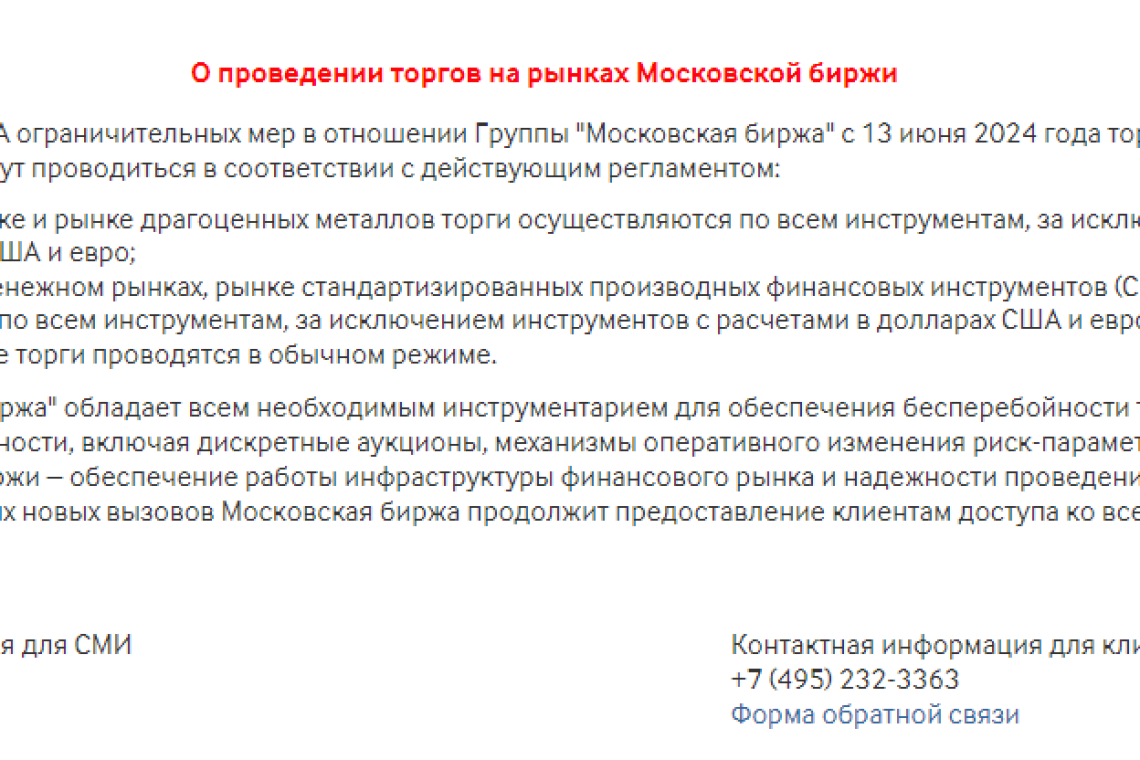
The Moscow Exchange announced minutes ago that it will not conduct trading in dollars and euros starting from June 13.
Earlier today, U.S. Treasury announced that the United States is imposing sanctions on the Moscow Exchange and the National Clearing Center.
RUMORS swirling on Moscow right now say Russia may have to “take-out” U.S. Stock Exchanges by placing them on the target list of “decision-making centers.” That would make New York City a primary target for Russian military strikes.
WHAT WOULD JOSEY WALES DO?
“Now remember, when things look bad and it looks like you’re not gonna make it, then you gotta get mean. I mean plumb, mad-dog mean. ‘Cause if you lose your head and you give up then you neither live nor win. That’s just the way it is.” – Josey Wales

“To hell with them fellas. Buzzards gotta eat, same as worms.” – Josey Wales
As our political, economic, civic, and social structures continue to degrade, dissolve, and disintegrate before our very eyes, it is easy to become apathetic and surrender to hopelessness. There are relentless powerful forces actively trying to destroy the fabric of our society and force the masses into economic servitude while caged in an electronic gulag, controlled by an oligarchy of evil totalitarian minded billionaires and their lackeys in key governmental, political, banking, military, media, and corporate positions of power. We are in the same situation as Josey Wales in Clint Eastwood’s epic 1976 film – The Outlaw Josey Wales.
The film tells the story of Josey Wales, a Missouri farmer, just trying to live his life in peace without interference from the government, uninterested in the violent Civil War between two monolithic forces fighting for their created causes. His wife and son are brutally murdered by Union Redleg militants, led by the despicable Captain Terrill, while he was away from his homestead. After burying his family, his mind naturally turns towards seeking revenge against the perpetrators, and he begins to practice shooting. He joins a group of pro-Confederate bushwackers who become the scourge of Union forces until the war’s conclusion.
At the conclusion of the war, Josey’s friend and superior, Captain Fletcher, persuades the guerrillas to surrender, having been promised by Senator Lane that they will be granted amnesty if they hand over their weapons. Josey refuses to surrender because he knows you can never trust the government or the politicians who make promises they never keep. They have been pissing down our backs since the last Civil War, while telling us it’s just raining, so everyone can relate to this scene in the movie.
Senator: The war’s over. Our side won the war. Now we must busy ourselves winning the peace. And Fletcher, there’s an old saying: To the victors belong the spoils.
Fletcher: There’s another old saying, Senator: Don’t piss down my back and tell me it’s raining.
Wales having refused to surrender, along with a young guerrilla named Jamie, are the only survivors when Terrill’s Redlegs massacre the surrendering men. Wales intervenes and wipes out many of the Redlegs with a Gatling gun before fleeing with Jamie, who dies from a bullet wound sustained in the massacre after helping Josey kill two pursuing bounty hunters.
Fletcher learns the lesson that you can never trust the government, or the lackeys carrying out their mandates. They will lie and murder to accomplish their goals. Anyone who does not bow to their authority will be treated as an outlaw, with no acquiescence to the Constitution, decency, or simple human dignity. Once decent men are pushed too far, they will push back in a more violent manner than the authorities will expect. Violence begets violence, and will create more Josey Wales type characters who will not surrender or ever bow down to governmental authority.
Fletcher: Damn you, Senator. You promised me those men would be decently treated.
Senator Lane: They were decently treated. They were decently fed and then they were decently shot. Those men are common outlaws, nothing more.
The remainder of the movie entails Union soldiers and bounty hunters trying to track and kill Josey, while he accumulates a rag-tag group of companions, including Indians, foul mouthed grannies, and a slew of other settlers trying to live their lives unhindered by the government. Clint Eastwood’s character maintains a stoic meanness throughout the film towards his government enabled enemies, but has empathy and kindheartedness towards the downtrodden people who represent the vast majority of citizens in this country.
I found it interesting the film was based on the novel Gone to Texas, written with a virulent anti-government slant by a former George Wallace speechwriter. When the script writer/director tried to tone down the anti-government aspects, Eastwood told him no and eventually fired him, taking over as director for the remainder of the film. Eastwood’s refusal to bow to Hollywood pressure and soften the dialogue and story line is a tribute to his resolute dislike and mistrust of governmental authorities. He has essentially gone his own way and made his films his way, never letting the Hollywood elite dictate his path.
Released in 1976 when anti-war sentiment was at its peak, following the government created Vietnam war debacle, which slaughtered over 50,000 American boys, Eastwood later referred to it as an anti-war film. And we all know it is governments and those Deep State operatives who control the levers of power, and start wars to increase their wealth, power and control. War never ends because it is extremely profitable for those waging it, while the youth doing the fighting are just cannon fodder for corporate interests. Eastwood was dead on, as we have waged wars in Iraq, Afghanistan, Syria, Libya, and now Ukraine and Palestine, benefiting the military industrial complex at the expense of you and me.
“As for Josey Wales, I saw the parallels to the modern day at that time. Everybody gets tired of it, but it never ends. A war is a horrible thing.” – Clint Eastwood
Eastwood equates the plight of the Confederacy with the plight of the American Indian, as both groups were bullied, bloodied and crushed under the weight of the Federal government, which began its unfettered growth during the Civil War and has now reached its zenith of incompetence, arrogance, lawlessness, and hatred towards the citizens it is supposed to serve. Most people just want to be left alone, like Josey Wales, to live their lives in peace and harmony with their fellow community members. But the federal government makes that impossible, with their rules, regulations, taxes, fees, and enforcement thugs harassing the public on a daily basis.
In Eastwood’s movie they murder his family, murder his comrades, and are hell-bent on murdering him. The song remains the same. Our government murdered people minding their own business at Ruby Ridge. They murdered women and children at Waco. They murdered a rancher at Bundy Ranch. They send young men to war for bankers and corporations. They have been unlawfully imprisoning protestors in dungeons for a fake insurrection fomented and initiated by government agents. They rigged the presidential election and have convicted the leading political candidate of fake crimes he did not commit in order to maintain control over the political system.
The list could go on for pages, as the totalitarian methods and abuse of power against the citizens of this country accelerate at a breakneck pace. Fear of seeing their wealth and power slip away has created an almost psychotic spasm of unhindered chaotic flailing about, in an ultimately fruitless effort to retain control. They are fearful of the masses wakening from their technology induced slumber and realizing the enemy is not the groups they have been programmed to hate, but the very government pulling the strings of this clownshow.
The government needs a sedated, dumbed down populace who fear what they are told to fear and obey the instructions of their overlords. But the covid scamdemic and continuing death of loved ones from the toxic jabs, has opened the eyes of millions. The debt death spiral induced by Biden’s handlers, supercharged by the coordinated and financed invasion of our southern border by third world mutts, and resulting in raging inflation for average American families, has angered and infuriated the masses. We are approaching our moment of truth.
The government is in the midst of creating millions of vengeful Josey Wales characters. As political chaos increases in the coming months, the threat of global conflagration escalates and the economic plight of the masses deteriorates, revenge against politicians, government drones, and the globalist financial elite for creating this madness will expand rapidly. We know what Josey Wales would do. The question is what will we do.
Eastwood made his final Western masterpiece, sixteen years after Josey Wales, with the release of the Academy Award winning Unforgiven. He paid tribute to Josey Wales in the climactic scene in the saloon when confronting Little Bill. In The Outlaw Josey Wales Grandma Sarah’s initial reaction to meeting Josey Wales was:
“This Mr. Wales is a cold-blooded killer. He’s from Missouri, where they’re all known to be killers of innocent men, women and children.”
He closes the loop with Will Munny, out of Missouri, with the same false accusation that he killed women and children, as he also seeks retribution on government authoritarians who murdered an innocent man. Both Josey Wales and Will Munny tried to live out their lives as peaceful farmers, but were forced to revert to violence because the government would not allow them to live in peace.
Little Bill Daggett : “You’d be William Munny out of Missouri. Killer of women and children.”
Will Munny : “That’s right. I’ve killed women and children. I’ve killed just about everything that walks or crawled at one time or another. And I’m here to kill you, Little Bill, for what you did to Ned.”
Eastwood’s first and last epic Westerns both examined the harsh reality of violence and retribution as the logical consequence for crimes committed against innocent people just trying to lives their lives. His meditations on the concepts of age, repute, courage, and the cloudy definition of heroism, make for far deeper and complex examinations of the old West than other western films. Eastwood distinguishes between the brutal reality of a world controlled and run by tyrannical psychopaths acting as government agents, and people living peacefully, with no government intervention.
Eastwood’s ideal vision of America as a pluralist society of individualists of all races and backgrounds who put aside the past and their difference to live in harmony, contrasts with the reality of a society controlled and manipulated by those referred to as the “invisible government” by Edward Bernays. The ruling elite do not want people to live peaceably in a self reliant manner. The climactic scene in Outlaw Josey Wales between Josey Wales and Ten Bears captures the nature of our world and the difference between governments and the people.
Josie Wales : “I came here to die with you. Or to live with you. Dying ain’t so hard for men like you and me. It’s living that’s hard when all you’ve ever cared about has been butchered or raped. Governments don’t live together – people live together. With governments, you don’t always get a fair word or a fair fight. Well, I’ve come here to give you either one or get either one from you. I came here like this so you’ll know my word of death is true, and my word of life is then true. The bear lives here, the wolf, the antelope, the Comanche. And so will we. Now we’ll only hunt what we need to live on, same as the Comanche does. And every spring, when the grass turns green, and the Comanche moves north, you can rest here in peace, butcher some of our cattle, and jerk beef for the journey. The sign of the Comanche, that will be on our lodge. That’s my word of life.”
Ten Bears : “It’s sad that governments are chiefed by the double tongues. There is iron in your words of death for all Comanche to see, and so there is iron in your words of life. No signed paper can hold the iron. It must come from men. The words of Ten Bears carries the same iron of life and death. It is good that warriors such as we meet in the struggle of life… or death. It shall be life.”
I had previously used Josey Wales as the basis for Part Four of my five part series based on Clint Eastwood movies in 2012, documenting how the Federal Reserve, under the control of the Wall Street banking cabal, had destroyed the middle class and set in motion the ultimate destruction of the American economic system. Here we are twelve years later and that destruction is approaching its climax. As the powers that be are flailing about in a final destructive apocalyptic spasm of hate, greed, and war, the average American needs to channel their inner Josey Wales.
We can either give up and allow those running this shitshow for their own benefit to enslave us in perpetual debt, culling us with their toxic “vaccines”, making us eat meatless meat and bugs, forcing us into their digital currencies, 15 minute cities (aka electronic gulags), electric cars, and social credit system, or we can get plumb, mad-dog mean and man up. In order to reverse our totalitarian spiral, being executed by powerful mega-wealthy men and their highly compensated double tongued lackey politicians, bankers, media moguls, and corporate chiefs, those 300 million guns will need to be put to use.
If we want to live together peacefully, unhindered by an overbearing, corrupt government behemoth, controlled by evil men with evil intentions, then we will have to fight. That’s just the way it is. Ask yourself, “What would Josey Wales do?”, and act accordingly.
Ancient Flood Myth in China
What’s the most expensive thing you’ve gotten for an insanely cheap price?
This was in 1979-1980. I used to have the habit of going into any and every music store I saw or passed by. So one day, I spot this little mom & pop music store and of course I stop in. I’m looking for old guitars to buy & resell. So the store itself has nothing but pretty cheap student models, nothing I’m interested in. But the store, which looked like it was last painted in 1957, had this back area where there were little rooms, obviously where they gave lessons. So I wander back there, and on the wall are black and white 8 x 10 photos of kids giving a high-school concert. They’re (the photos) about 10–15 years old. Here are these goofy looking kids, but they are playing neat old guitars. All the guitars were Gibsons with only one exception. And the amps were glorious old Fender amps in white covering, leaned back on their “tilt-back legs”, Tremoluxes and Bandmasters. They all looked new, so obviously, the store must have supplied their floor models for the concert. Glorious! And the photos had the names of the kids playing the concert in those plastic “DYMO” labels that used to be popular. So I thought to myself “How stupid would it be to copy those names down and go to a phone book and see if I could look up and see if any of those last names were still around and then call and ask if they still had those guitars?” So that’s exactly what I did. So I didn’t expect to be able to contact anyone named Smith or Jones, but one photo had a kid with an unusual last name. He was playing a Gibson ES-175, which is a very nice f-hole jazz guitar, it was funny, it looked way too big on him. Anyway, I walked over to a phone booth (we had them back then) and looked up in the directory (we had them back then) and found the name and called. I explained where I had gotten the name & number and I asked the fellow whether he still had that guitar and if so, if he would consider selling it. He said, “No, I traded that guitar long ago for a Fender “Sandblaster”…but if you’d want that guitar, you can have it for $125. Well, the Strat was about 5x as desirable as the Gibson (to me) and I got his address, went over, and bought his 1958 Strat for $125. It was definitely in worn, but otherwise original condition.
It was actually not that great a guitar, it was not a good example. But it looked awesome. That guitar today would be worth $30,000 in two seconds, but I sold it the next day for $1350. I couldn’t afford to have more than 2 guitars “in stock”, I just didn’t have the capital.
Nope. Never.
The Daily Shorpy






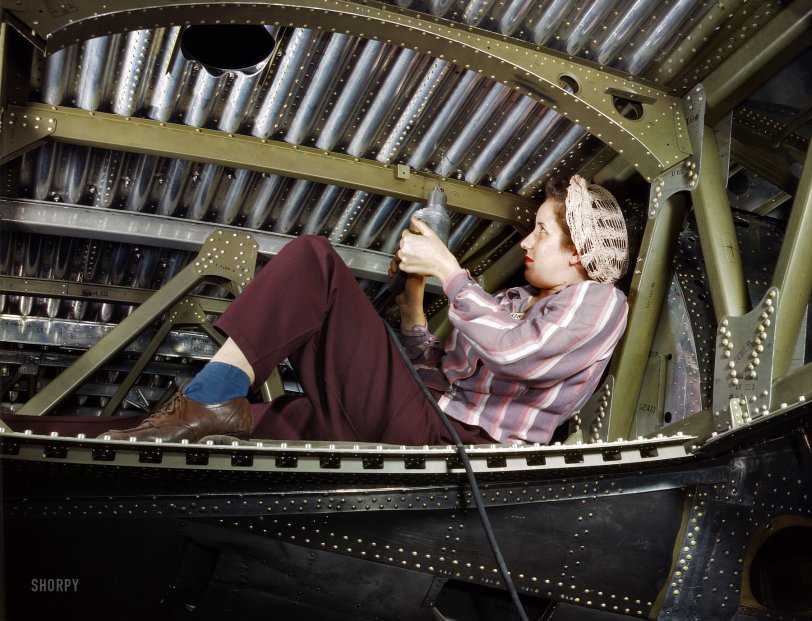



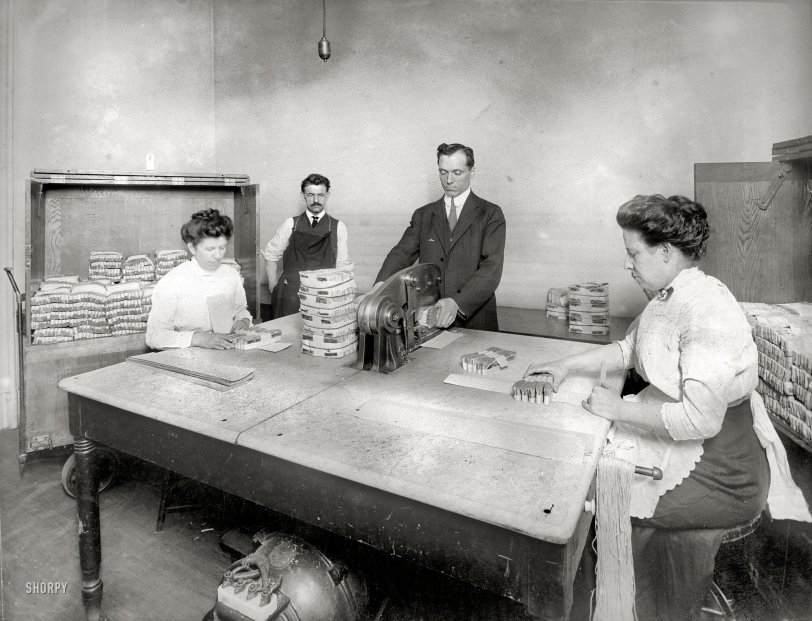


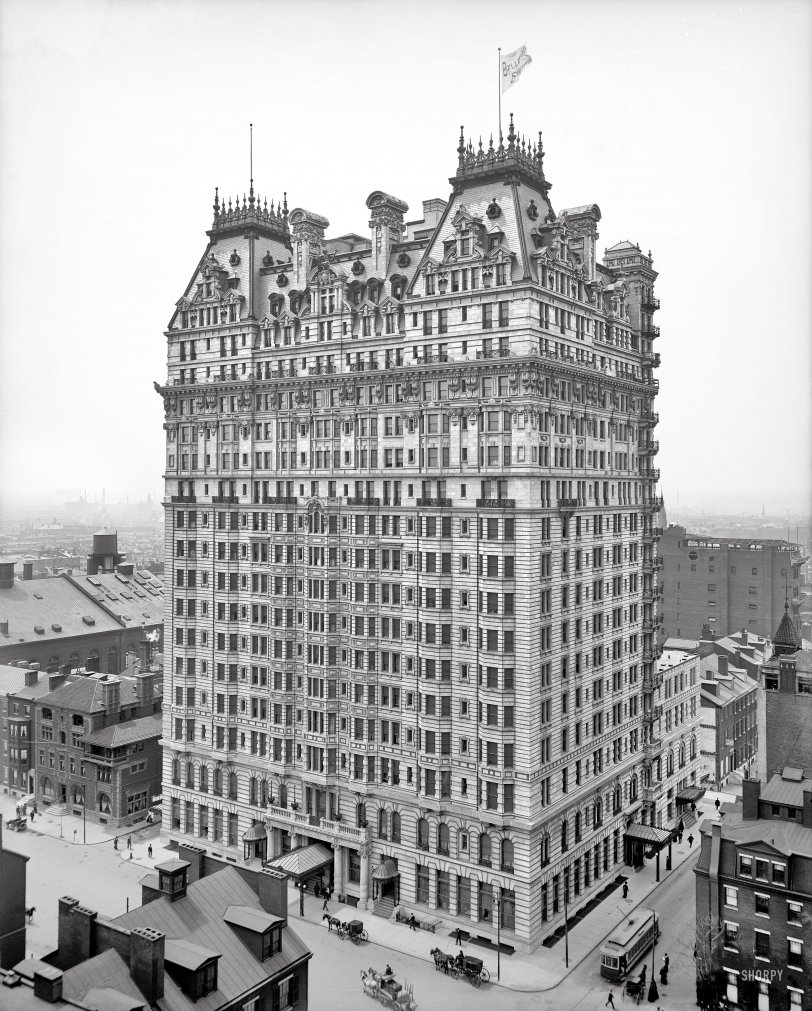

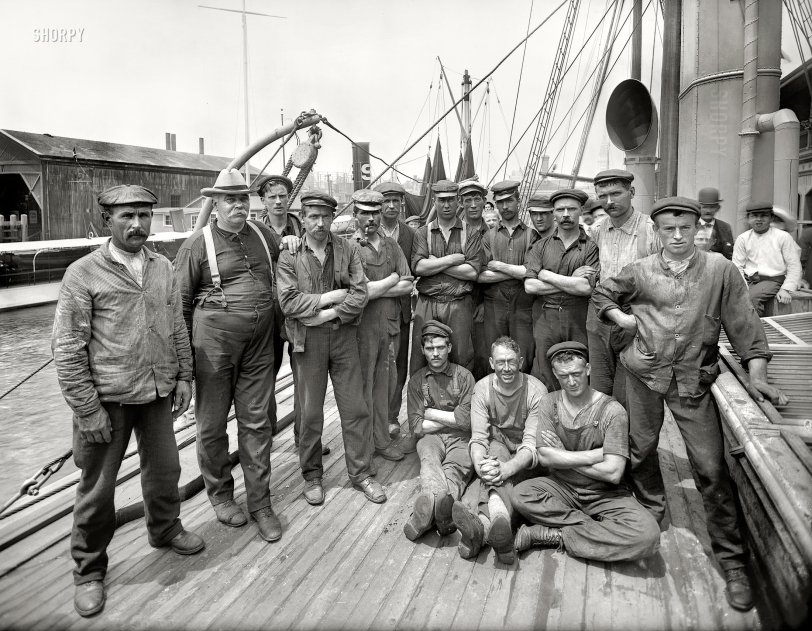


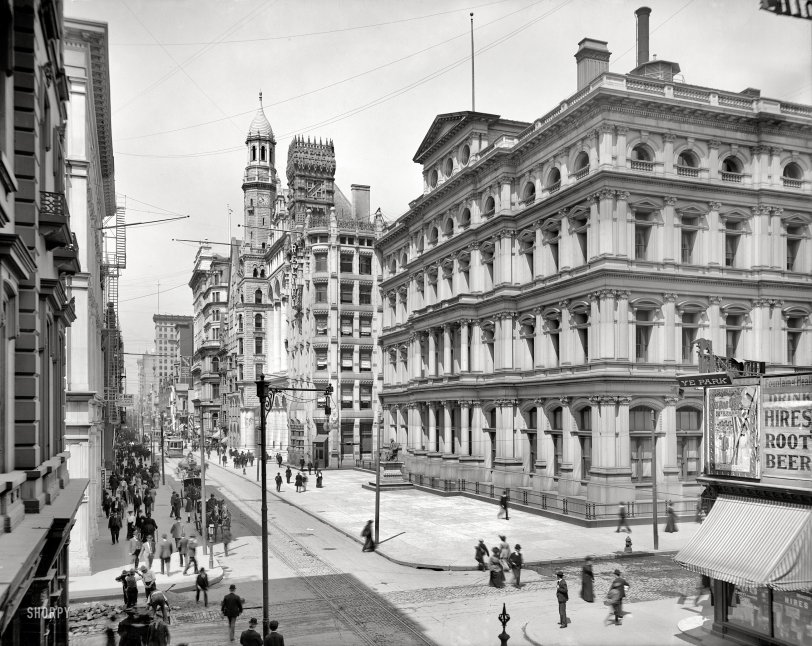


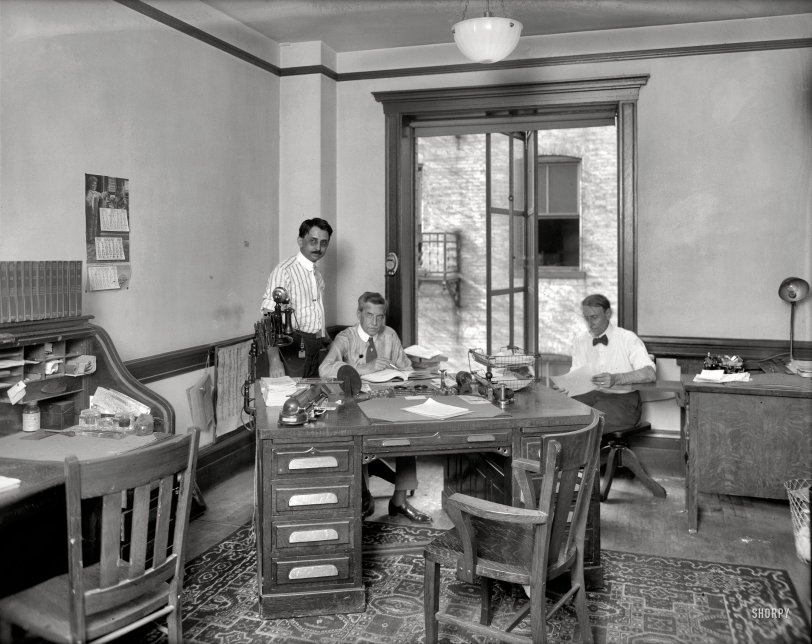
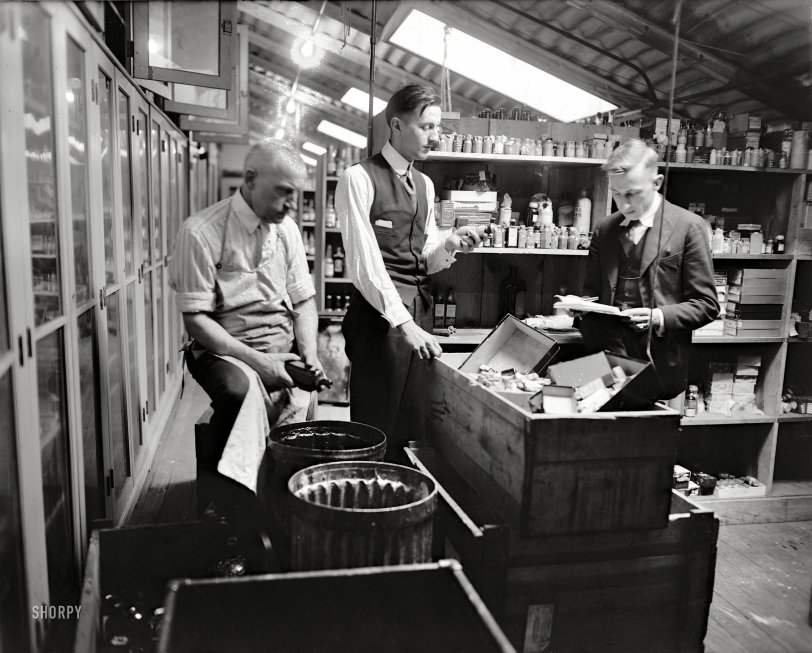

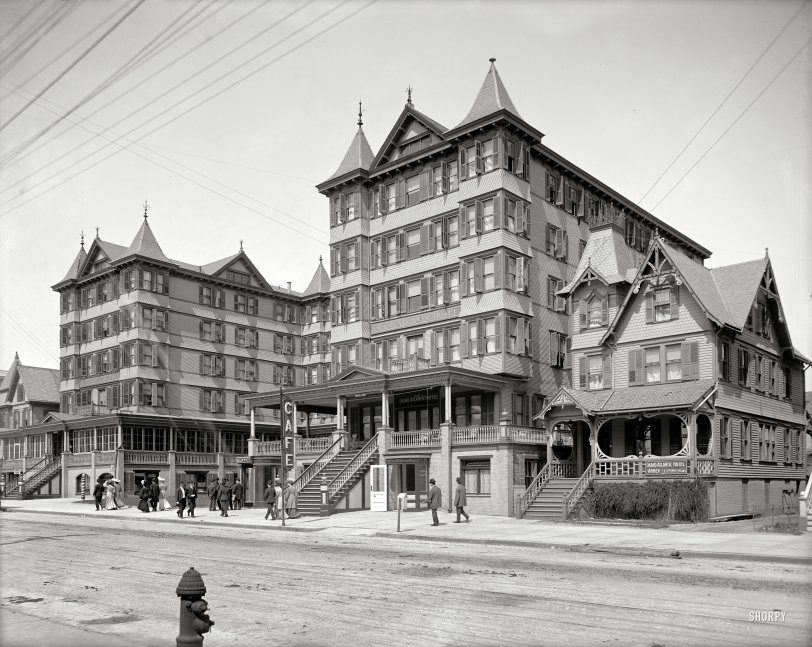
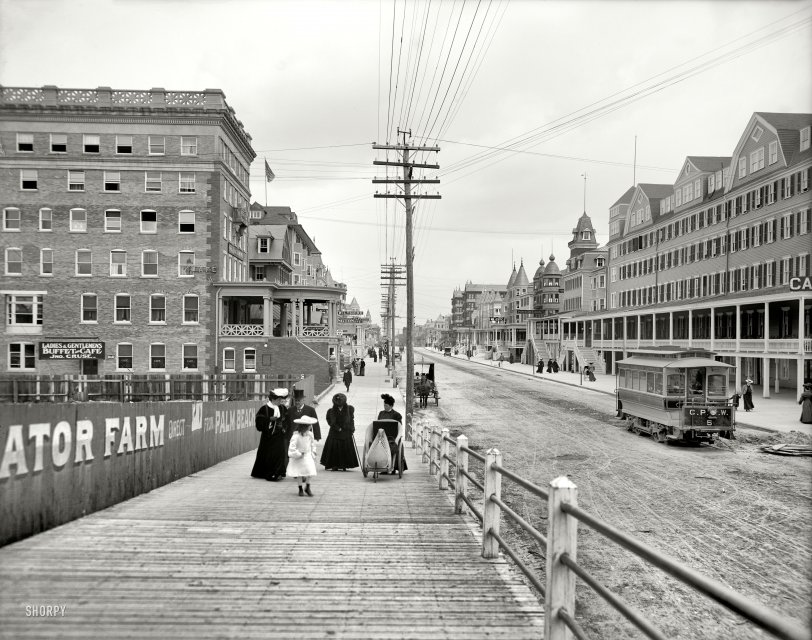

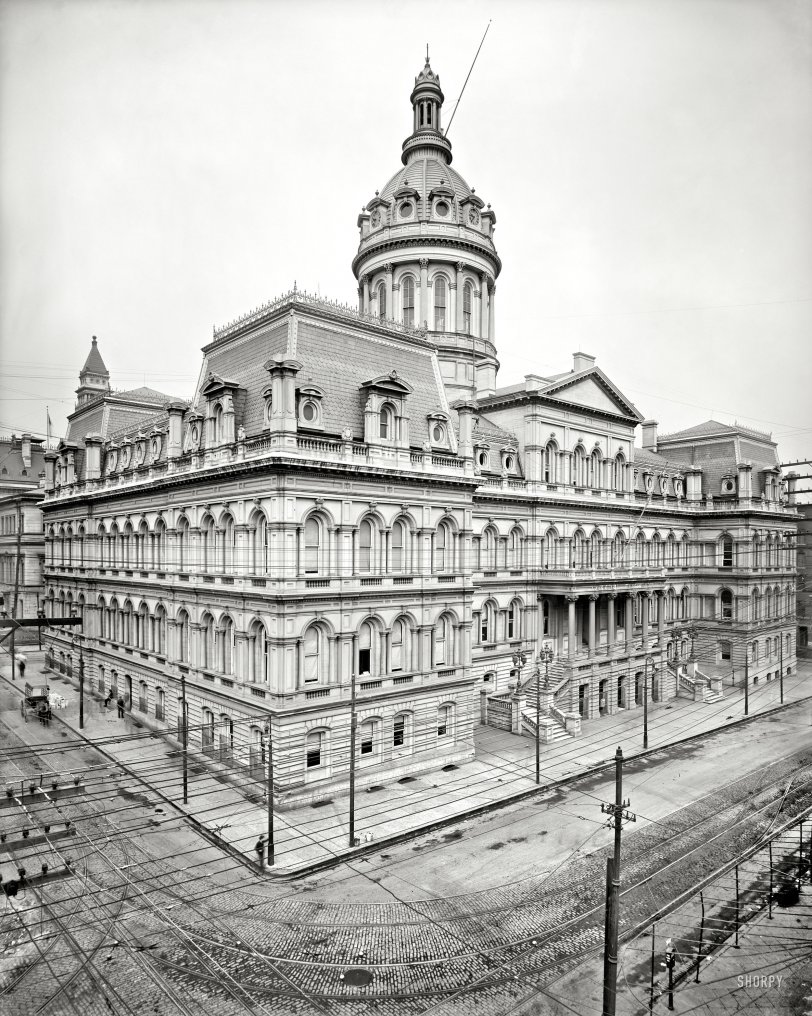
GAO ZHIKAI:
“I think the Dutch are really doing something foul because they traveled all the way from Europe to East Asia and claim that they are exercising supervision on behalf of the United Nations.
The fact that their helicopter became aloft very close to the largest metropolis in China—Shanghai—raised concerns on the Chinese side.
The Chinese Navy and the Air Force are fully justified to take action against such interference, and for the Dutch side to pretend to be the victim is really a double standard.
Fortunately, this didn’t end up in real friction between the two sides.
The Dutch side needs to be warned that if they repeat such acts of infringement against Chinese law, they will be held fully responsible.
We know that in recent months, there have been quite a few countries, like Canada and others, which have claimed that their airplanes or naval ships were being monitored.
First of all, all these countries are not neighboring countries with China.
They came from afar—Canada is on the other side of the Pacific Ocean, and the Netherlands is on the other side of the Eurasian continent.
Why did they travel this length to East Asia?
I think they acted under the direction of the United States, which wants to strengthen the so-called first island chain and the second island chain to try to suffocate China and prevent the Chinese naval forces, air forces, and otherwise from going beyond these chains into the Pacific.
I think the Netherlands, this time again, is acting in concert with the United States and on their behalf, trying to raise tensions in East Asia and really muddle the water rather than create stability in our part of the world.
If these countries are really worried that the Chinese planes or naval ships are getting closer to them to monitor their movements and ask for their information, the best way is to stay far away from China rather than encroach upon it and violate China’s legitimate security interests.
If they really want to test the willpower of the Chinese nation as to how to defend China’s sovereignty and legitimate territorial interests, then they need to be prepared for all the consequences.
I think it is very important to take note of the fact that there are indeed important Western countries—especially members of the NATO alliance—that are becoming more and more hostile against China.
They keep talking about a confrontation with China because they say China’s values are different from theirs.
Are you really serious?
What kind of values are you talking about?
Are you talking about values from 100 years in your history, 200 years in your history, or values from your darkest days of colonial power, enslaving people, and selling people like slaves? Come on.
So I think it is dangerous to see that certain countries want to follow the US leadership, for example, in instigating greater antagonism between China and the United States.
Some even claim that war is destined between China and the United States.
Countries like the Netherlands need to use their own brains to think about the reality in the world of today.
They need to fully stand for peace rather than be hijacked onto the bandwagon of war between and among major countries in the world of today.”
Excerpt from remarks by Chinese lawyer and academic Victor Gao Zhikai in an interview for Global Times, June 12, 2024.
DNA
Unpleasant Thoughts
Submitted into Contest #250 in response to: A character overhears something at a black-tie event that puts the night in jeopardy. … view prompt
Stephen Brown
Most people could telepathically communicate these days. This is all thanks to our ancestors screwing around with our genetics. They thought it would help us unite as a species, but it caused more harm than good. People of that time didn’t know how to shut off their internal monologue and Earth was a noisy place. I would have hated it.
People still struggle to keep thier thoughts quiet. Mainly during times of stress, excitement, or when the alcohol intake was high. An event like was a great way to ensure all three factors came into play. The hall was noisy, and I hated it, but I pushed past the annoyance to serve the Emperor.
I walked by a man and a woman discussing something about increased sales from the minerals found in The Belt. The man’s suit was crisp and dark blue. Someone from Earth, probably Luna, actually. The woman was muscular and wearing a revealing dress with several colors. Definitely a Jovian. They love to show off—even more than the Emperor. They always talk about how they have the biggest planet and the biggest ships. Sure, and like their planet, they are full of gas and hot air.
“I can’t believe Neptune is paying that much of a premium!”, said the woman in shock. Or was it frustration? I couldn’t tell. Jovian facial features were hard to read, but their thoughts were the opposite.
“You’d be surprised,” said the man as he took a drink from the glass he was holding, “It costs a ton of credits to get anything over there. Neptunians will pay anything to get luxury resources over to them.”
“Yes, but simple metals and ice should not be defined as a ‘luxury resource’. Earth is always looking for a way to squeeze credits from those doing the real work,” said the Jovian woman. Man, I wish I could just kick him right between the legs, she thought.
His face showed he did not hear her thoughts. He must’ve been a blanker. Sometimes I wish I couldn’t hear people’s thoughts. He just replied with his stupid smile, but I didn’t listen further, or I would have kicked him between the legs.
“Greedy Earthers,” I mumbled to myself.
***
While making my rounds, Captain Ero chimed in. Her voice blaring through my helmet. “Echo Guards 2 and 4, report.”
“Nothing much on my end,” said Blix with that annoying laid back tone of his. “I’ve heard a few interesting things, but nothing we already don’t know. Terraforming Venus, the Emperor signing off on another Earthen belt mine, etcetera. I’ve recorded the thoughts to analyze later, in case I missed something. I swear, if I have to hear another Jovian ask some to compare their ship sizes, I’m gonna….”
“Enough Blix,” said the Captain, annoyance building in her voice. “It’s already a pain in the ass to deal with these non-Martian pricks. I don’t need you to adding to it.”
“But Boss, aren’t you a Nepp…”, Blix said.
“Shut it. I’m half. The Martian side is the only one I give two shits about,” Captain Ero interrupted. “Reg, report.”
“Nothing at the mome…”
Why…taking…deploy…nano…
Strange. It sounded like I was listening to jammed comms, but this was someone’s thoughts and they were close.
“Ma’am. Give me a moment. I may have something.”
“Understood. Report in on what you find. Wilkens and I are finishing up below. Call the Imperial Guard if you think you found anything suspicious. The Emperor should have 20 in the main hall and another 30 throughout the station.”
“Will do, ma’am,” I said as I scanned the room with more intensity. The nice thing about Echo Guard armor is that nobody could see your face. To them, I was a strange humanoid in reflective chrome.
I continued my normal walking pattern to find how close they were. His voice seemed impatient, yet focused. Not good on a night when everyone was relaxed or excited. This person was planning something, and I needed to find out what that was.
***
Moments later, the hall broke in applause. I looked up for a moment to see the four leaders of the Sol System gather on a dais at one end of the hall; Emperor Olympus of Mars, Prime Minister Marolles of Earth, President Ishk of the Jupiter Republic, and King Domino of Neptune. They waved and bowed as if they just finished putting on a show. All but Emperor Olympus sat down and their assigned seats. The Emperor walked up to a nearby podium and began his speech. His voice booming as he highlighted the importance of this day — more importantly, where it took place.
They’ve…ceremo…activ…now…
That was behind me. I continued my path and turned around. Trying to lock in on who it was. There were seven individuals around the source of the voice. They all seemed to be enamored by the Emperor’s speech. All but one.
He wore a light blue suit. His long white hair braided and blue tattoos along his clean-shaven jaw. Someone from Neptune. But this someone looked quite familiar to me. I did a quick facial scan from my helm and discovered that he was Prince Domino.
Something about him seemed off. As I walked closer to his party, I stared into his eyes, putting every ounce of focus I had on them. Suddenly, the surrounding room got quiet and only his voice remained.
Wait…I think it’s looking at me. Shit. What? No…I said they’ve started the damn ceremony, so you need to activate the nanobots now!
Not good. He was trying to use some kind of technique so he could telepathically communicate with someone at long range. He was also using a thought-blocker, but I don’t think it was a thought-blocker. Wilkens would have told them to turn around, royalty or not. Well, too bad he’s going up against an Echo Guard. Our training helps us to bypass their intention to keep us out of their heads. The human body is a strange thing. Having someone look deep into your eyes, and I mean deep, causes weaker people to lose their own focus and they begin mentally blabbing.
His eyes grew wide. Oh shit. I think the Echo thing can hear me…
I approached the Prince, engaging my forearm stun gun. Those eyes seem too desperate for me to go in without a defensive measure ready.
…I thought you said…ok…I’m coming. He excused himself from his party and turned away.
“Cap. I think we’ve got trouble. Prince Domino just tried to mental-block me and he said something about nanobots. You and Wilkens need to get to the scanning array. I don’t think regular scans are going to work here.”
All I could hear was static in reply.
“Wilkens…do you read? Where’s Cap?”
More static.
“Blix, we’ve got a problem here.”
Nothing.
I immediately scanned the room for Blix. At the opposite end of the hall, I could see him standing at rest.
“Blix! Report.”
I quickly moved over to him, but not so quickly that it would cause concern to our guests. Once I got to Blix, I stood in front of him.
Blix, what the hell are you doing? I mentally asked.
No response. Blix was far too much of a yapper to be this quiet. I move closer to his reflective helm, seeing myself and causing an infinite mirror effect with my helm. I entered a code into Blix’s suit to deactivate a small portion of his helm. I took a sharp breath when I saw his face. It was blue and foam was coming out of his mouth. He was dead.
***
I reactivated his helm and opened encrypted comms to the Emperor’s Guard.
“Red Guard Alpha 1. We’ve got a situation. We need to evacuate the Emperor.”
“Acknowledge Echo Guard 2. That’s a big ask, so you better know what the hell you’re doing,” grunted the Red Guard Captain.
“When have I ever I led you wrong?”
“Fair enough.”
“Also, I need to find Prince Domino. He’s involved in this somehow.” I made my way to where I last saw him walk off.
“Well shit. Checking now. Got him. He’s…that weird…he’s going down to level E3. What the hell does a Neppy Prince need to do in a Martian Engineering bay?”
“Nothing good,” I said as I moved into a sprint. Behind me I could hear the Emperor apologize that there seemed to be a mechanical issue with Olympus Hall and that everyone should return to their ships.
I made my way through the station while readying my access code to open the maintenance stairs. The door slide open right as I approached. I entered the stairway and looked over the railing to see how far the drop was. My HUD notified me that level E3 was 36 levels below.
“Great,” I said as I jumped over the railing.
***
One doesn’t have too much time to think when falling, but this wasn’t my first jump when chasing down a dumbass who thought they could escape through a flight of stairs.
I saw the numbers of each level flash before me. I engaged my suit booster as soon as I saw E1. By the time I made it over to E3, I was slow enough to grab the rail and leap over it and go through the doors.
“Cap, were you able to pinpoint where the Prince is located?” I said between breaths as I ran.
“Yeah…and you’re not going to like what I’m about to say.”
“Fire away.”
“He’s nearing the power bay…with Captain Ero. She’s not wearing her armor,” said the Red Guard Captain. Confusion in his voice.
“What the hell is going on?” I mumbled.
“Beats me, but I trust you’ll find out and resolve this. Also, the Emperor has evacuated. The other three leaders, too. We also got Echo Guard 4 out. Sorry to say, but the Docs couldn’t do anything for him. Even revival boosters didn’t help. Some kind of poison. Did he eat anything?”
“No, but he took something. What about Wilkens?” I said as I neared the power bay.
“No sign of him,” said Cap, his voice on edge.
“Understood. Keep getting everyone out. If the Prince and Cap are in the power bay, then we are in big trouble.”
“Understood. Red Guard out.”
I cut off comms so I could focus on the task at hand as I came up to the power bay door. It was still open.
As a slowly walked through, I checked my stun gun’s power, a habit whenever I walk into a room with hostiles. There was still plenty of juice left, even after using the boosters. Ahead, I saw the Prince and Captain Ero working on a console.
Cap…what the hell are you doing? I thought.
“Shit,” I could hear her say out loud. “I thought you were going to stay with Brix, Reg. You had my orders.”
“Who the hell are you talking to?” snapped the Prince.
“One of my guards.”
“What?! I thought you said you took care of them?”
“I did take care of them, or so I thought.”
I stepped out and pulled my stun gun up to both of them. “Back away from the console.”
The Cap and Prince lifted their hands up and turned to me.
“Why the hell are you doing this?” I asked.
“Do give everyone what they deserve!” said the Prince, his hair looking more disheveled than earlier. Including you, bitch, he thought.
Captain Ero’s body collapsed before I could return fire, but I certainly did. The stun pulses slammed into the Prince and he screamed out in pain, the gun built into his forearm smoking.
I ran over to the Prince and grabbed his hands and using my suit to fry any other weapon systems that he could hide underneath his own flesh.
“Why the hell did you do that?!” I yelled, grabbing his body and throwing him up to the console.
I told you. I’m just giving you all what you deserved, including that half-blood, thought the Prince as he looked at Cap. All of you within the Sol Systems think you can treat us like garbage. Making our kingdom grow poor with your outrageous demands. All of you patting yourselves on the back while we suffer.
And how do you expect this whole plan of yours to help you? I thought as I pushed him harder against the console. For good measure. I could even hear the glass screens cracking against the pressure.
Easy. War. Humans are good at it. Someone destroys the Emperor’s prized station while all of Sol’s leaders are aboard. Leaderless factions will react. Nobody is going to want to deal with us as we are so far out. You’ll tear each other apart and my kingdom will claim what’s left with me as king.
You’re willing to kill your own father to accomplish this?
Oh yes. But it looks like they escaped. At least my nanobots took over the station’s thrusters. Now you can all fight over who threw the Emperor’s toy into your drab red planet, thought the Prince as he smiled.
I’ll let them know, I thought.
They won’t believe you.
Of course they will. I’ve recorded the whole conversation, I thought as I tapped my helmet.
Impossible. Nobody can record thoughts!
“Oh, yes, I can. A little Echo Guard specialty,” I said as I looked at the console. They had set the boosters to slam the station into Olympus Mons. “Well, enjoy your ride.”
What? thought the Prince as I tied him to a nearby railing and left him.
***
It wasn’t long until I found where the Prince had a small vessel ready for escape. I hopped into the cockpit and started up the ship. Alarms were blaring at me. The ship was kind enough to tell me we were about to die if we didn’t leave soon. Fortunately, it didn’t take long to undock and get away from the station. The evacuees’ ships were nearby, so I made my way to the Emperor’s ship. Behind me Olympus Hall’s boosters fully engaged and sent the station straight into Olympus Mons. The Emperor was going to be pissed.
Great, I thought to myself.
Living at Home in Your 30’s …..
Who is your favourite communist?
Thomas Sankara.

“Africa’s Guevara” he was termed. A true-blood communist he was. A good fellow I’d like to have a beer with, he was.
He was a low rank Army official when he successfully performed a coup d’état against the unstable Republic of the Haute-Volta and became its leader. Then Sankara began a series of truly “communist” reforms:
- He changed the name of the country from a bland geographical location to “Burkina Fasso” (the land of upright people);
- He stripped feudal landlords of their tax-collecting privileges;
- Distributed land controlled by landlords to peasants who worked on them;
- He set a cap for land size. Before you jump to your seat and say that the country began to starve, well, the country only became self-sufficient in food after these reforms. In fact, the country became a net exporter of food!
- Stimulated cotton plantation and tried to establish textile industries;
- Launched a mass vaccination program that quickly eradicated measles, polio and meningitis. Burkina Fasso was the first African country to recognise the danger of the AIDS epidemic;
- State-built brick factories helped the boor build themselves sturdier houses, improving living conditions;
- During his tenure, the country planted 7 million trees to fight deforestation;
- The country began building roads and rail connecting every major urban centre, all completed in four years;
- These roads and railways were built using locally available materials and voluntary labour;
- He had about a third of his government staffed with women;
- He banned genital mutilation, forced marriages and polygamy;
- He recruited women for the Armed forces;
- There was a widespread sexual education programme to prevent teenage pregnancy and unplanned parenthood;
- He sold the fleet of Mercedes owned by the government and replaced them with much cheaper Renault 5;
- The profession of chauffeur (driver) was discontinued: all government officials, including himself, were required to drive their own cars;
- He refused foreign aid: “Whoever feeds you, controls you.”
- He ordered a large Army supply centre converted into the country’s first supermarket;
- He discontinued the use of air conditioning in government buildings and his own house (that’s why you only see photos of him glistening with sweat drops);
- He required public workers to wear clothes made locally;
- He kept himself fit (at 34) running around the town in jumpers, protected only by a pistol concealed under his sweater;
- He played the guitar and composed the new national anthem. He used to play it sometimes;
- Instead of putting his official portrait in public offices, he instructed public servants to bring their own portraits to the working place because “there are seven million Thomas Sankaras” and because “everyone is the government”.
- Sankara was not very successful in his educational programme, though; but, again, he only had four years in power!
- During his government the country reduced its foreign debt.
In 1987, a group of Liberian and Burkinabé mercenaries, all funded by France and the USA, cornered and killed Sankara. They dismembered and partially burned his body beyond recognition before scattering it in different unmarked graves. The new dictator reversed almost every measure Sankara implemented. Legend has it (but I don’t know if it’s true) that he even ordered trees to be uprooted , textile plants dismantled and a huge IMF loan was taken to “restore” the country’s economy into “good shape.”
The Titan Submersible Disaster Shocked the World. The Exclusive Inside Story Is More Disturbing Than Anyone Imagined
A year after OceanGate’s sub imploded, thousands of leaked documents and interviews with ex-employees reveal how the company’s CEO cut corners, ignored warnings, and lied in his fatal quest to reach the Titanic.
The Ocean Sciences Building at the University of Washington in Seattle is a brightly modern, four-story structure, with large glass windows reflecting the bay across the street.
On the afternoon of July 7, 2016, it was being slowly locked down.
Red lights began flashing at the entrances as students and faculty filed out under overcast skies. Eventually, just a handful of people remained inside, preparing to unleash one of the most destructive forces in the natural world: the crushing weight of about 2½ miles of ocean water.
In the building’s high-pressure testing facility, a black, pill-shaped capsule hung from a hoist on the ceiling. About 3 feet long, it was a scale model of a submersible called Cyclops 2, developed by a local startup called OceanGate. The company’s CEO, Stockton Rush, had cofounded the company in 2009 as a sort of submarine charter service, anticipating a growing need for commercial and research trips to the ocean floor. At first, Rush acquired older, steel-hulled subs for expeditions, but in 2013 OceanGate had begun designing what the company called “a revolutionary new manned submersible.” Among the sub’s innovations were its lightweight hull, which was built from carbon fiber and could accommodate more passengers than the spherical cabins traditionally used in deep-sea diving. By 2016, Rush’s dream was to take paying customers down to the most famous shipwreck of them all: the Titanic, 3,800 meters below the surface of the Atlantic Ocean.
Engineers carefully lowered the Cyclops 2 model into the testing tank nose-first, like a bomb being loaded into a silo, and then screwed on the tank’s 3,600-pound lid. Then they began pumping in water, increasing the pressure to mimic a submersible’s dive. If you’re hanging out at sea level, the weight of the atmosphere above you exerts 14.7 pounds per square inch (psi). The deeper you go, the stronger that pressure; at the Titanic’s depth, the pressure is about 6,500 psi. Soon, the pressure gauge on UW’s test tank read 1,000 psi, and it kept ticking up—2,000 psi, 5,000 psi. At about the 73-minute mark, as the pressure in the tank reached 6,500 psi, there was a sudden roar and the tank shuddered violently.
“I felt it in my body,” an OceanGate employee wrote in an email later that night. “The building rocked, and my ears rang for a long time.”
“Scared the shit out of everyone,” he added.
The model had imploded thousands of meters short of the safety margin OceanGate had designed for.
In the high-stakes, high-cost world of crewed submersibles, most engineering teams would have gone back to the drawing board, or at least ordered more models to test. Rush’s company didn’t do either of those things. Instead, within months, OceanGate began building a full-scale Cyclops 2 based on the imploded model. This submersible design, later renamed Titan, eventually made it down to the Titanic in 2021. It even returned to the site for expeditions the next two years. But nearly one year ago, on June 18, 2023, Titan dove to the infamous wreck and imploded, instantly killing all five people onboard, including Rush himself.
The disaster captivated and horrified the world. Deep-sea experts criticized OceanGate’s choices, from Titan’s carbon-fiber construction to Rush’s public disdain for industry regulations, which he believed stifled innovation. Organizations that had worked with OceanGate, including the University of Washington as well as the Boeing Company, released statements denying that they contributed to Titan.
A trove of tens of thousands of internal OceanGate emails, documents, and photographs provided exclusively to WIRED by anonymous sources sheds new light on Titan’s development, from its initial design and manufacture through its first deep-sea operations. The documents, validated by interviews with two third-party suppliers and several former OceanGate employees with intimate knowledge of Titan, reveal never-before-reported details about the design and testing of the submersible. They show that Boeing and the University of Washington were both involved in the early stages of OceanGate’s carbon-fiber sub project, although their work did not make it into the final Titan design. The trove also reveals a company culture in which employees who questioned their bosses’ high-speed approach and decisions were dismissed as overly cautious or even fired. (The former employees who spoke to WIRED have asked not to be named for fear of being sued by the families of those who died aboard the vessel.) Most of all, the documents show how Rush, blinkered by his own ambition to be the Elon Musk of the deep seas, repeatedly overstated OceanGate’s progress and, on at least one occasion, outright lied about significant problems with Titan’s hull, which has not been previously reported.
A representative for OceanGate, which ceased all operations last summer, declined to comment on WIRED’s findings.
I met Stockton Rush on June 24, 2015, while reporting on OceanGate for New Scientist magazine. A former flight engineer and tech investor, Rush was already styling himself a subaquatic Musk. “I wanted to be the first person on Mars until I realized there was nothing there,” Rush told me at a city center dock in Seattle. “But in the ocean, there are new life-forms, things people have never discovered.” Rush believed that Earth’s oceans, not outer space, were where humanity would find refuge from existential risks like climate change. “My goal is to move the needle,” he told me.
Around us, employees were prepping OceanGate’s prototype submersible, the Cyclops 1, for its deepest dive to date. The sub was a cylindrical, steel-hulled design rated for dives up to 500 meters. OceanGate had acquired it a few years earlier and refurbished it, adding LEDs and a PlayStation controller for easy steering, and replacing an ugly exterior cabin with a sleek white plastic fairing to protect components outside the hull. Together with the large acrylic viewport, the effect was a sort of one-eyed robot shark. Up to five people could squeeze inside—which is what Rush and I were about to do, for a test dive in Seattle’s Elliott Bay.
Ninety minutes later and 130 meters deeper, we were totally lost. First the thruster software had glitched, leaving us floating just above the seafloor. Now the sub’s compass was acting up. The shipwreck we aimed to explore, a rail ferry that had once carried Teddy Roosevelt, was nowhere to be seen. All I could spy outside the Cyclops’ forward dome was the occasional salmon dancing in the frigid water.
As I began to feel the chill seeping through the sub’s steel hull, Rush asked me to open my iPhone’s compass app. He wanted to compare it to the one on his phone. The headings did not match, but he rebooted the thrusters and we set off in what he was pretty sure was the right direction.
“You’re heading in exactly the wrong direction,” said a faint voice transmitted via an acoustic link from the support ship tracking us on the surface. We eventually located the sunken ship, its rotting bow emerging into the Cyclops’ headlight. It was an otherworldly experience, made more thrilling by the hint of danger.
Back at the dock, Rush brushed off the problems we had encountered. This is exactly why OceanGate started with the Cyclops 1, he said, rather than anything capable of diving deeper. “I could have built a multimillion-dollar version and all of a sudden I’ve got to figure out really stupid stuff like the magnetic compass,” he told me. “The Cyclops 1 is getting us ready. When we do the Cyclops 2, then all these bugs will be out.”
The Cyclops 2, which Rush renamed Titan in 2018, was already on the drawing board. And Rush believed he had the biggest bug—how to make a vessel that could safely dive 20 times deeper than America’s nuclear subs—worked out. He would use a modern wonder material: carbon fiber.
Carbon-fiber composites are some of the strongest materials available to engineers. They are formed of thin strands of atomic carbon within plastic resins, layer upon layer, then cured carefully at high temperatures. The resulting composites can be both stronger and lighter than titanium, and it was this combination that caught Rush’s attention. A carbon-fiber Titan could be roughly the same size and weight as the steel Cyclops and yet be able to dive up to 12 times deeper. It would be much cheaper for a support vessel to carry and deploy at sea than a metal sub, and would also be more buoyant, reducing the risk of getting stranded on the ocean floor. While carbon fiber has been used in everything from cars to rockets, no one had ever dived in a deep-water carbon-fiber submersible. Rush wanted to be the first.
In 2013, OceanGate struck up a partnership with the University of Washington’s Applied Physics Laboratory to develop the new sub. The university has a long history of working with composites and designing its own underwater vehicles. It also already had a relationship with OceanGate, after using its subs for research; the physics lab helped write the software used by Cyclops 1. The university touted the arrangement in press releases at the time: “UW, Local Company Building Innovative Deep-Sea Manned Submarine,” read one headline from October 2013. The story was updated with a note in 2023 saying that “the vessel that resulted from this partnership” was the Cyclops 1. Emails from OceanGate leaked exclusively to WIRED indicate that UW researchers provided hundreds of detailed 3D CAD drawings of components for a carbon-fiber sub between 2013 and 2016, as part of a $5 million contract. But the relationship between the lab and OceanGate was contentious, according to emails.
UW claims that OceanGate and the lab parted ways after just $650,000 worth of work, and former OceanGate employees told WIRED that none of UW’s hardware or software work wound up in the finished sub.
OceanGate also announced that Boeing Research & Technology was helping with the project. In October 2013, two engineers at Boeing, Mark Negley and William Koch, produced a detailed 70-page preliminary design containing renderings, manufacturing advice, and technical analysis. These details of Boeing’s involvement have not been reported before. “Boeing was not a partner on the Titan and did not design or build it,” Jessica Kowal, a spokesperson for Boeing, said in a statement. The company declined to answer on the record any other questions from WIRED. Negley and Koch, who are still employed by Boeing, did not respond to LinkedIn messages.
Even at this early stage, these engineers were warning of potential problems ahead.
Negley and Koch pointed out that although composites can be stronger than any metal, they have other challenges. Carbon fiber can get progressively weaker, sometimes in unexpected ways. The manufacturing process can introduce defects if the resin is cured too long or not long enough, if debris gets in, or if the material is laid or wound unevenly. And the more layers a structure has, the engineers wrote, the greater the risk of a defect that would weaken it. Titan would ultimately have 660 layers of carbon fiber. To mitigate these risks, the Boeing engineers suggested a rigorous quality assurance process during manufacture and ultrasound testing of the hull after it was made. Ultrasound scans could find defects or delaminations in the hull—places where the carbon-fiber layers had separated.
To manufacture the hull, Rush turned to a company called Spencer Composites. First, though, OceanGate needed a scaled-down model of the hull to test how it would fare against the intense pressures at the bottom of the sea. By 2015, according to a design document written by Spencer, OceanGate wanted its hull to be rated up to 6,000 meters and have a safety factor of up to 2.25—meaning that it should be stable to two and a quarter times that depth, or 13,500 meters. James Cameron’s record-setting Deepsea Challenger had a safety factor of 1.36. Alvin, the submersible that originally explored the Titanic, had a 1.8 or higher. (Spencer Composites did not respond to requests for comment.)
In June 2015, just before my trip in Cyclops 1, engineers placed a one-third scale model of Titan in an 8-foot-long testing tank at APL-UW for its first pressure test. This model was built entirely of carbon fiber, including the end domes, which ended up failing at pressures equating to around just 3,000 meters, according to a report written by Rush. OceanGate commissioned Spencer to make more domes, but these would take months to arrive. Meanwhile, the cylinder was tested again, this time with solid aluminum discs on the ends, and reached 4,100 meters without incident. But when OceanGate received the new carbon-fiber domes and tested the hull in March 2016, the new domes again imploded at 3,000 meters.
The test that “scared the shit out of everyone,” in one engineer’s words, was OceanGate’s fourth. This time, the hull (again with aluminum caps) reached the equivalent of 4,500 meters before imploding, giving it a miserly 1.18 safety factor for any dives to Titanic depths.
“Over the next months we will analyze the data in detail … and then run a test with a new cylinder through at least 1,000 cycles to confirm its durability,” Rush wrote to shareholders at the time. That replacement scale model was not made, and the new tests never happened, former employees tell WIRED, in part because Rush trusted OceanGate’s computer models. Even when OceanGate decided to change the domes in the final design from carbon fiber to titanium, Rush didn’t commission models to test the interactions between the new materials; one former employee who was familiar with Rush’s decision says the CEO balked at the high price tag.
“The modeling says it’s OK. The analysis says it’s OK,” one former employee says. “We build airplanes on the same type of analysis and then we go throw people in them.”
But a low-pressure environment, like flying, is different from a high-pressure one. Carbon fiber is inherently stronger when holding pressure in, like what happens with an aircraft in the stratosphere, than when keeping pressure out, as happens underwater. And all cylindrical vessels resist buckling better when the air pressure is higher inside.
Submersible experts not associated with OceanGate told WIRED that they would do much more testing on a new design. “We did at least 10 scale-model pressure hulls that we tested to destruction,” says Adam Wright, an engineer who had worked on explorer Steve Fossett’s 2005 carbon-fiber sub, which was shelved after Fossett died in a plane crash. And that was for a submersible that would only be used for a single mission. OceanGate was planning to use its submersible repeatedly—up to 10,000 times, according to internal design documents.
“Carbon fiber is a very sensible material if it’s been engineered correctly and manufactured in a controlled way,” says Chase Hogoboom, president and cofounder of Composite Energy Technologies, which has successfully tested small carbon-fiber vessels to the equivalent of 6,000 meters hundreds of times. “It takes millions of dollars and many years, but it’s not rocket science. It’s just connecting the dots.”
OceanGate tested the model hull to destruction only once, and never used the titanium components that would become fixtures on the final sub. Instead, the company simply increased the thickness of the carbon-fiber hull in its design specs from 4.5 to 5 inches, and commissioned Spencer to build the real thing. (Later, OceanGate engineers found that Titan’s full-size hull was too thick for portable ultrasonic scanners, and a coating Spencer had applied to it would further block the signals. Rush decided that moving the entire sub to a lab for scanning would be too expensive, says a former employee who was familiar with Rush’s thinking. As a result, no scans were made—going against the advice of both Boeing and OceanGate engineers.)
Unlike Cyclops 1, with its large, 180-degree viewing dome, Titan’s front dome was made of solid titanium, with a smaller 23-inch viewport in the center. The viewport, made from 9-inch-thick acrylic, was an entirely new design by Tony Nissen, OceanGate’s director of engineering, and it was going to be manufactured by a company called Hydrospace Group.
Will Kohnen, Hydrospace’s CEO, told WIRED that he had originally expected Rush to thoroughly test the viewport according to rigorous standards set by the American Society of Mechanical Engineers. Under those standards, OceanGate would test at least five windows to destruction at high pressure, cycle a viewport from low to high pressure a thousand times, and subject another viewport to five times the intended pressure for 300 consecutive hours to see how much the plastic slowly shrank under pressure, says Kohnen.
“The more innovative you get, the more testing you’ve got to do,” Kohnen says. “Over a period of years, it was pretty obvious that OceanGate wasn’t going to do the testing.” The former employees who spoke to WIRED also said that OceanGate wasn’t testing the viewport to the society’s standards.
By the fall of 2017, Kohnen was getting worried. As a last-ditch effort, in November he sent Rush an email offering “a serious discount” to build a second viewport using a design that had been tested and certified to 4,000 meters. It could be swapped out for the experimental window within 24 hours, he wrote. Kohnen says that Rush told him he wasn’t interested.
Kohnen delivered OceanGate’s viewport in December. He would rate it to only 650 meters—one-sixth of the depth to the Titanic. He also shared an analysis, done pro bono by an independent expert, concluding that OceanGate’s design might fail after only a few 4,000-meter dives. OceanGate nevertheless installed the viewport in Titan later that month. Construction on the sub was almost complete, and the company was already advertising its first expedition to the Titanic in May.
It was time for the engineers to hand it over to OceanGate’s operations team for testing at sea. But there was another snag. David Lochridge, who oversaw marine operations at the company and who needed to sign off on the transfer, became convinced that Titan was unsafe. In January 2018, Lochridge sent Rush a quality-control inspection report detailing 27 issues with the vehicle, from questionable O-ring seals on the domes and missing bolts to flammable materials and more concerns about its carbon-fiber hull. Rush fired him the next day. (Although Lochridge later made a whistleblower report to the Occupational Safety and Health Administration about Titan, Rush sued him for breach of contract. The settlement of that lawsuit resulted in Lochridge dropping his complaint, paying OceanGate nearly $10,000, and signing an NDA. Lochridge did not respond to WIRED.)
Will Kohnen also couldn’t forget about Titan, and the foreboding he had about the whole enterprise. “We have a rogue element within the submersible industry,” he remembers thinking. If something went wrong with Titan, it might scare people off deep-sea exploration more widely. In March 2018, he drafted a letter, signed by more than 30 crewed submersible experts, urging Rush to test the vessel with an accredited outside group. (The letter was earlier reported by the New York Times.)
Virtually all marine vessels are certified by organizations such as the American Bureau of Shipping, DNV, or Lloyd’s Register, which ensure that they are built using approved materials and methods and carry appropriate safety gear. It has been widely reported that Rush was dismissive of such certification, but what has not been made public until now is that OceanGate pursued certification with DNV (then known as DNV GL) in 2017—until Rush saw the price. “[DNV] informed me that this was not an easy few thousand dollar project as [it] had presented, but would cost around $50,000,” he later wrote in an email to Rob McCallum, a deep-sea explorer who had also signed Kohnen’s letter.
“Titan and its safety systems are way beyond anything currently in use … I have grown tired of industry players who try to use a safety argument to stop innovation and new entrants from entering their small existing market,” Rush wrote to McCallum. “Since [starting] OceanGate we have heard the baseless cries of ‘you are going to kill someone’ way too often.”
Days later, Rush received an even more pointed warning from Boeing’s Mark Negley, who had stayed in contact with the CEO after he helped with a preliminary design. Negley had recently carried out an analysis of Spencer Composites’ hull based on information Rush had shared. He did not mince words when sharing his findings, which WIRED is reporting for the first time. “We think you are at a high risk of a significant failure at or before you reach 4,000 meters. We do not think you have any safety margin,” he wrote in an email on March 30. “Be cautious and careful.”
Negley provided a graph charting the strain on the submersible against depth. It shows a skull and crossbones in the region below 4,000 meters.
Despite repeated warnings, Rush seemed unfazed. His confidence in Titan was based in part on the new safety systems OceanGate had designed. “A lot of risk mitigation was supposed to ride on the real-time health monitoring,” says one former employee. The heart of that system, designed by an experienced electrical engineer and OceanGate board member named Mike Furlotti, was a suite of sensors and microchips that analyzed the hull’s acoustic emissions—the little pops made by carbon fibers as they break under compression. OceanGate’s theory was that the hull would be fairly noisy on its first few dives but would get quieter when taken to the same depths over and over, one former employee explains. If the acoustic monitoring system started getting really loud on a dive, that would be a clear indication to surface immediately. (Multiple attempts to contact Furlotti for comment were unsuccessful.)
Wright and other industry experts have been extremely critical of this setup. “I’m sure you can pick up these acoustic events fine, but you just don’t know when the end point is,” he says. “You don’t know how many pops is too many, and it could be different for every vessel.”
There was even skepticism within OceanGate itself. In September 2017, the engineer responsible for integrating Furlotti’s design into Titan sent an anxious email to management expressing concerns about the system’s ability to accurately track fiber breakage over time.
OceanGate hired an outside consultant named Allen Green to assess the acoustic monitoring. Green, an authority on the sounds that materials make under stress, endorsed the system in 2018. Later, though, when Green saw how Rush was describing the system to the public—the CEO claimed it could detect the sound of “micro-buckling” in the sub’s hull “way before it fails”—he wrote a concerned email to an OceanGate employee, reported here for the first time.
Rather than warning of failure, Green explained that the sounds indicated “irreversible” damage. “It is my belief, substantiated by many years of experience, that composite structures all have a finite lifetime,” wrote Green, who died in 2021. “While I do not intend to be an alarmist, I did not sleep well and arose early to send this message.”
Rush had pitched OceanGate’s board and investors on a grand vision of what his company could be. By 2018, that included a fleet of self-driving Titans that could dive to 6,000 meters, and satellite offices in Croatia, Israel, and the South Pacific. He imagined a world whose oceans were populated by OceanGate’s crewed underwater bases, which could be used for data storage or even “Plan B habitats” for billionaire preppers.
Reality was more prosaic. Like most startups, OceanGate was in constant need of funds. Rush was trying to save money wherever he could. Interns, who made up around a third of the engineering team, were paid as little as $13 an hour. (When a manager pointed out in 2016 that Washington’s minimum wage was just $9.47 an hour, Rush responded, “I agree we are high. $10 seems fair.”) Rush also downgraded the sub’s titanium components from aerospace grade 5 quality to weaker and cheaper grade 3, says one former employee.
According to internal documents, by 2018 the company had raised around $9 million in venture capital and another $4 million from subsidiary companies that profited off OceanGate’s research and scientific missions. But the real business opportunity would be trips to the Titanic.
Rush had planned six missions to visit the legendary shipwreck in the summer of 2018, each with nine people paying $105,000. With every mission bringing in nearly a million dollars in revenue but costing OceanGate only an estimated $333,000, the more visits Titan could make to the bottom of the North Atlantic, the better. Although the plan was for the finished sub to make more than 30 dives in shallow water before going to deeper waters, OceanGate managed just 18.
In mid-April, Titan was transported to Marsh Harbour in the Bahamas, where deep water could be found very close to land. But before Titan was even moved into the water, it was hit by lightning, damaging its electronics. Some of the damaged equipment was replaced, but the sub was without many components for weeks. Rush nevertheless insisted on attempting a shallow dive during high, rolling seas.
Choppy waves ripped fairings and foam from Titan as it was being towed back from the dive site, causing it to sink. “I was merely ‘spam in the can’ with no comms for 9+ hours inside the sub,” Rush wrote the next day. “I could see parts of the sub floating away on my cameras, but could not communicate to the tow team—a remarkably surreal and frustrating experience.”
Rush had to face facts: There was now no chance of OceanGate reaching the Titanic in 2018. Eager ticket holders (and investors) would have to wait another year.
While they were still in the Bahamas, the team did manage to lower Titan on a series of uncrewed dives, eventually reaching 4,000 meters. But engineers found the hull was warping more under compression than it was meant to, by perhaps as much as 37 percent. Nevertheless, Rush wanted to keep diving deeper with Titan, with himself at the helm. When one engineer expressed concern about performing crewed tests at this point, Nissen wrote to him, “Yesterday I told you if you don’t have the stomach for this type of engineering then OceanGate isn’t for you.”
On December 10, Rush successfully dove Titan to a depth of 3,939 meters—just enough to get to the Titanic. Nissen wrote to the engineering team: “Diving to such deep depths is extremely complicated if you want to be untethered, communicate with the surface, be location tracked with reasonable accuracy, and monitor the health of your vehicle. And, we have delivered. You all have a lot to brag about.”
Titan reached a similar depth again in April, with a crew of four including Rush. While OceanGate touted the dive as history-making proof of its submersible’s bona fides, even Rush was getting worried about loud noises the hull was making at depth. Then on June 7, three weeks before Titan’s maiden voyage to the Titanic, an OceanGate pilot inspecting the interior with a flashlight noticed a crack in the hull. He sent Rush an email warning that the crack was “pretty serious.” A detailed internal report later showed that at least 11 square feet of carbon fiber had delaminated—meaning the bonds between layers had separated.
This time, Rush couldn’t ignore the data. The hull that was meant to last for 10,000 dives to the Titanic had made fewer than 50—and only three to 4,000 meters. It would have to be scrapped, and the Titanic missions would be delayed for yet another year. When Rush shared the news with GeekWire a few days later, however, he blamed the delay on legal complications with Titan’s support vessel.
It’s true that OceanGate ran into issues with maritime law, says one former employee: “The lie is that it was not the reason we delayed.”
After the crack was found in Titan’s hull, OceanGate started searching for a new carbon-fiber contractor. By early 2020, many OceanGate engineers had been laid off or had left the company, insiders say. Tony Nissen was out, and a team that had once numbered more than 20 was reduced to just a handful. “Stockton never really wanted an engineering team, but he needed somebody to build it,” says one insider. “We were down to a skeleton team,” says another.
Rush then announced that the company had inked a partnership with NASA to “collaborate on the development, manufacturing, and testing” of a new carbon-fiber cylinder. (Covid-19 had other plans, shutting down NASA for months. Ultimately, the agency told ABC, “NASA did not conduct testing and manufacturing via its workforce or facilities.”)
The new hull would instead be made by two aerospace firms in Washington state, Electroimpact and Janicki Industries. Electroimpact laid the carbon fibers, and Janicki cured the material in its ovens, confirmed one former employee. Electroimpact did not provide a response to questions about its role, and Janicki declined to comment.
This time, OceanGate had two scale models made, which were once again tested at the University of Washington. Once again, the models imploded early, possibly due to warping of the hulls during manufacturing, says a former employee.
OceanGate scrambled to solve the issue. One idea: Rather than cure all the layers at once, they would cure the hull in stages. Electroimpact would wind about 100 layers of the hull, then ship it to Janicki to cure and settle. Then Janicki would send the hull back to Electroimpact to repeat the process. They were running out of time, so they went for it—skipping tests of the new procedure on samples and going straight to manufacturing the second hull. “The first time we did multiple cures was when we did the full hull,” says one former employee. The new hull was finished by January 2021. It passed pressure testing, similar to what was done at the University of Washington, but at a facility in Maryland that could accommodate the full-size cylinder.
OceanGate’s engineers now needed to integrate the new hull with the rest of Titan. But Titan’s two titanium domes were still attached to each end of the old hull, sitting on titanium rings glued to the carbon fiber with aerospace-grade epoxy adhesive. Commissioning new titanium interface rings and domes was ruled “an absolute no” by Rush, one former employee says, because of the extra cost and delay. The company that made the original titanium components told WIRED that it did not make new rings for Rush, and three former employees say that OceanGate did, in fact, salvage and reuse the originals.
But staff had difficulty working out how to separate the old hull from the interface rings without damaging even a sliver of titanium. Gaps or bumps could have weakened the join with the new hull, say the sources. On dives, the hull and the rings needed to compress under pressure in perfect harmony. “I can’t imagine a situation where you could reuse the titanium rings,” Wright, the independent engineer, says. OceanGate somehow managed it.
By February 2021, photos of the newly reconstructed Titan were popping up on OceanGate’s Facebook page and other social media. After the implosion in 2023, one ex-employee looked back at these and noticed an unexpected addition: The company had added metal lifting points to both interface rings, apparently to provide a new way to hoist Titan into and out of the water. The addition of the lifting rings, reported by WIRED for the first time, was confirmed by a former employee who saw the engineering drawings, and by another source.
Previously, OceanGate had lifted Titan using a sling beneath the sub to avoid putting stress on the critical joins between the rings and the carbon-fiber hull. As far back as 2017, when the original Titan was first shipped to OceanGate, Nissen had warned the operations team to use only the sling: “The titanium cannot take load/tension.”
“Lifting points are a very serious part of a pressure vessel design and must be considered carefully, tested, and qualified,” says Will Kohnen. “Any lifting arrangement may impose loads and stresses into the pressure vessel, and this must be mitigated by analysis and test.” It is unclear whether such analysis or tests were carried out.
The diving season was about to begin, and after three years of expensive delays, OceanGate desperately needed income from the Titanic missions (whose tickets now cost $125,000 per person). “We were running out of time,” says a former OceanGate employee. Titan had only a few relatively shallow dives in Puget Sound before the company put it on a truck and sent it all the way across Canada to Newfoundland, the port closest to the Titanic wreck.
On July 13, 2021, OceanGate’s Titan made its first successful dive to the Titanic, with Rush serving as the pilot. “We had to overcome tremendous engineering, operational, business, and finally Covid-19 challenges to get here, and I am so proud of this team and grateful for the support of our many partners,” Rush said in a press release.
After the 2021 expedition, OceanGate was flush with success. The company announced plans for the following year’s expedition to document the wreck “in more detail than ever before” and urging “aspiring mission specialists” to get in touch.
The successes and warm media coverage continued in 2022. OceanGate was profiled by CBS Sunday Morning, which accompanied one of the missions that summer. When reporter David Pogue noticed how improvised the setup on the sub was, Rush reassured him. “The pressure vessel is not MacGyver at all, because that’s where we worked with Boeing and NASA and the University of Washington. Everything else can fail, your thrusters can go, your lights can go. You’re still going to be safe.” The rest of Pogue’s mission was sort of a farce—the sub got lost, things broke—but he came back safely.
That’s not what happened the following year. In June 2023, five eager people got ready to dive back down to the Titanic. They were Rush; Paul-Henri Nargeolet, a deep-sea explorer; and three paying passengers: a businessman named Hamish Harding and a father-son duo, Shahzada and Suleman Dawood. On June 18, they sealed Titan and dove. Within two hours, the support ship had lost contact with them.
Their disappearance set off a media frenzy. People speculated how long the crew might be able survive without power or aid. A massive search-and-rescue operation spent four days combing the sea before finding debris from the sub. The US Navy later confirmed it had detected loud sounds “consistent with an implosion” shortly after contact with Titan ended. OceanGate ceased its commercial and exploration activities a few weeks later.
The US Coast Guard is currently leading an international investigation into the deaths.
Several former employees said they were neither shocked nor surprised at OceanGate’s deadly accident. Three had left the company on safety grounds, and two separately described Titan as a ticking time bomb.
One former employee remembers preparing Titan for multiple successful Titanic missions, prior to 2023. “I put my heart and soul into building that sub,” he says. “Many, many hours inside the sub, outside the sub, building and testing it. She was my baby.”
Each time Titan was about to dip beneath the waves, he would pat her hull lightly. “I’d say, ‘Come on back to me baby, you’ll make it, you can do it.’ And when she’d come back up to the surface, I’d say, ‘Good job. You got everyone back up safe.’”
Until one day, she didn’t.
Now the bottom of the North Atlantic is littered with more evidence of human hubris, tiny pieces of a plastic video-game controller nestling among the barnacle-encrusted gold fixtures of the Titanic. Both vessels were at the cutting edge of technology, both exemplars of safety in the eyes of their overconfident creators. And in both cases, their passengers paid the price.
Know your girl
Ginger Chicken Pizza

Ingredients
- 2 tablespoons minced or pressed garlic
- 2 tablespoons minced fresh ginger
- 1 1/2 cups finely chopped scallions, including tops
- 1 teaspoon olive oil
- 2 tablespoons soy sauce
- 2 cups shredded boned, skinned cooked chicken
- 3 firm-ripe Roma tomatoes
- 1 (12 inch) baked pizza crust
- 1/2 cup pizza or marinara sauce
- 1 cup shredded mozzarella cheese
Instructions
- In a 10 to 12 inch nonstick frying pan over medium-high heat, stir garlic, ginger, scallions and oil just until onions are limp, about 5 minutes.
- In a bowl, mix soy sauce with chicken.
- Rinse and core tomatoes; cut crosswise into 1/8 to 1/4 inch thick slices.
- Place pizza crust in a 12 inch pizza pan or on a 14 x 17 inch baking sheet. Spread crust evenly with sauce, then scatter chicken mixture and onion mixture over sauce.
- Sprinkle pizza with cheese, and arrange tomato slices evenly over the surface.
- Bake in a 350 degrees F oven until cheese is melted and pizza is hot in center, 12 to 15 minutes.
- Cut into wedges to serve.
10 Of The Strangest Things Tourists Have Been Advised When Visiting America
When you live in America, you forget that the rest of the world might have a very different vision of life and laws in the United States. Travelers to the U.S. need to consult their nation’s travel advisories just as Americans do when going abroad.
The warnings for the land of the free and the home of the brave may seem a little ridiculous or excessive to Americans. Some are genuinely rooted in legal differences between nations, and some seem inspired by Hollywood misrepresentations of American life. Here are ten advisories that may make you chuckle, take mild offense, or even feel sympathy for people who live elsewhere.
10. Germany warns, “Do not talk to prostitutes.”
Prostitution is legal in parts of Europe, so the German government needed to remind its citizens that even chatting up a working girl can be seen as solicitation. This might be why many Europeans enjoy visiting rural Nevada more than you might expect.
9. Austria says. “Don’t drink the water.”
Yup, that’s for the United States, Not Mexico. Austria does give props for the general safety of consuming American water, but warns it tastes kinda funky. The H2O in the U.S. can taste a little chlorinated. Some regions of the country are definitely worse than others.
8. Switzerland warns: “Don’t pee in the street.”
This has more to do with what Europe views as the States’ draconian laws around public nudity than hygiene, but we’re fine with this advisory. In fact, Switzerland, if you could just come to Manhattan and Portland to tell people this, that’d be great.
7. The Chinese warn: “No cutting!”
Americans take standing politely in line for granted. In China, it’s apparently common to just insert yourself wherever you like in a line. In the U.S., it could lead to “disputes,” as the Chinese government coyly states. Americans know this could range from the cutter’s parentage being insulted right down to getting popped in the mouth.
6. Russia accurately advises not to rely on your cab driver.
This is one instance where Russia has a point. They bluntly inform their citizens that many cabbies in the U.S. are recent immigrants who may not know how to get somewhere any better than they do. Thank God most of us have smartphones with a map app now.
5. GUNS. GUNS EVERYWHERE!!!
Considering the way guns are depicted in movies and the understandable coverage mass shootings get on the news, it’s not very surprising that some other nations imagine America is a hell hole that rains down bullets every second of every day.
The reality is that most Americans live to the ripe old age of cardiac arrest, that guns and gun violence are in every country (legal or not), and the U.S. doesn’t actually have the highest rate of gun deaths in the world. It ranks thirty-first.
4. The Irish are meh about crime, but very concerned about weather.
For every continental European, Canadian, or Aussie fretting about guns, there’s an Irishman who shrugs. In fact, Ireland’s Department of Foreign Affairs and Trade says, “Crime remains relatively low in the US.”
But WHOA watch out for hurricanes and whatnot! A nation that freezing rain keeps lush and green has not seen the likes of tornadoes and hurricanes in fifty years, which is why Ophelia was so devastating.
3. Austria declares it’s okay to be gay.
The land of edelweiss happily tells travelers not to worry about booking a room for two boys or two girls, or even unmarried straight people. This may seem very quaint to Americans, but it’s a stark reminder that other parts of the world still view these behaviors as crimes.
2. Germany: “Don’t stalk Americans. They hate that.”
What is going on with you, Germany? They warn their travelers that America has laws on the books punishing people for “repeatedly following or repeatedly harassing another person, called ‘stalking’….” Nein means nein, you guys.
And number 1: Germany (again!) advises against being naked in public.
Depending on one’s perspective, Germany sounds like either the scariest place on Earth, or the greatest. They have to tell Germans not to change on the beach, parade around naked, or let kids run around naked, because America has —GASP— laws about that!
They say this also applies to breastfeeding, which is true depending on the area. But it also, with good reason, also applies to public urination, as the previously noted by the Swiss.
Y’all can go pee in your streets all you like, Europe. We’re good with our pee-free, nudity-free thoroughfares and boulevards, danke.


